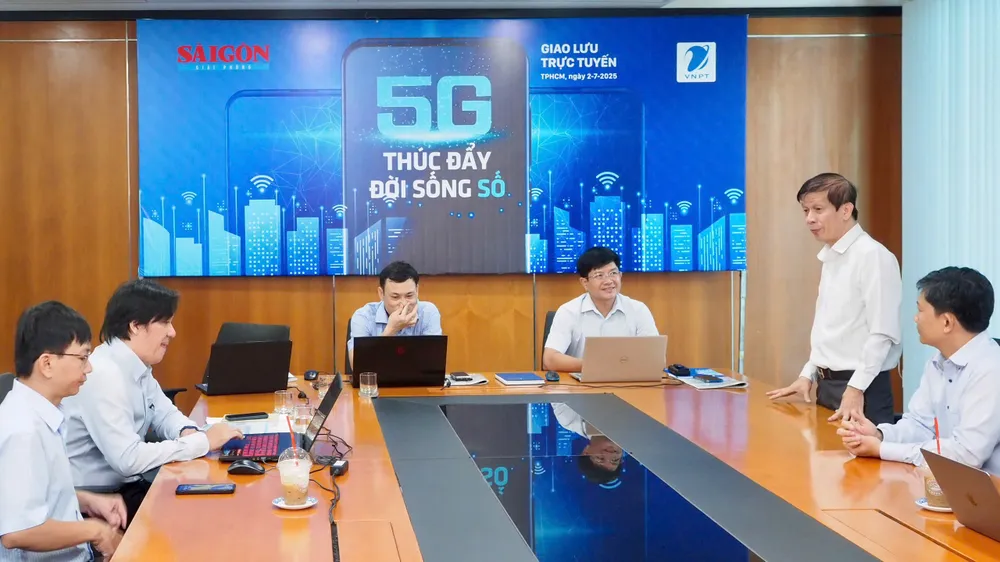
In Vietnam, 5G has been commercialized and is gradually asserting its important role in upgrading digital life by providing faster connection speeds, lower latency and the ability to connect more devices... creating conditions for many new applications and services. 5G helps improve entertainment experiences, support industries such as manufacturing, healthcare and education and promote digital transformation on a large scale. Especially in the context of merging into the new Ho Chi Minh City, the development of 5G infrastructure becomes even more important.
In order to inform readers to better understand 5G technology, its application capabilities as well as the greater values that 5G brings, Saigon Giai Phong Newspaper organizes an online exchange with the topic "5G promotes digital life" at 9:00 a.m. on July 2, 2025 on SGGP Electronic Newspaper with the participation of:
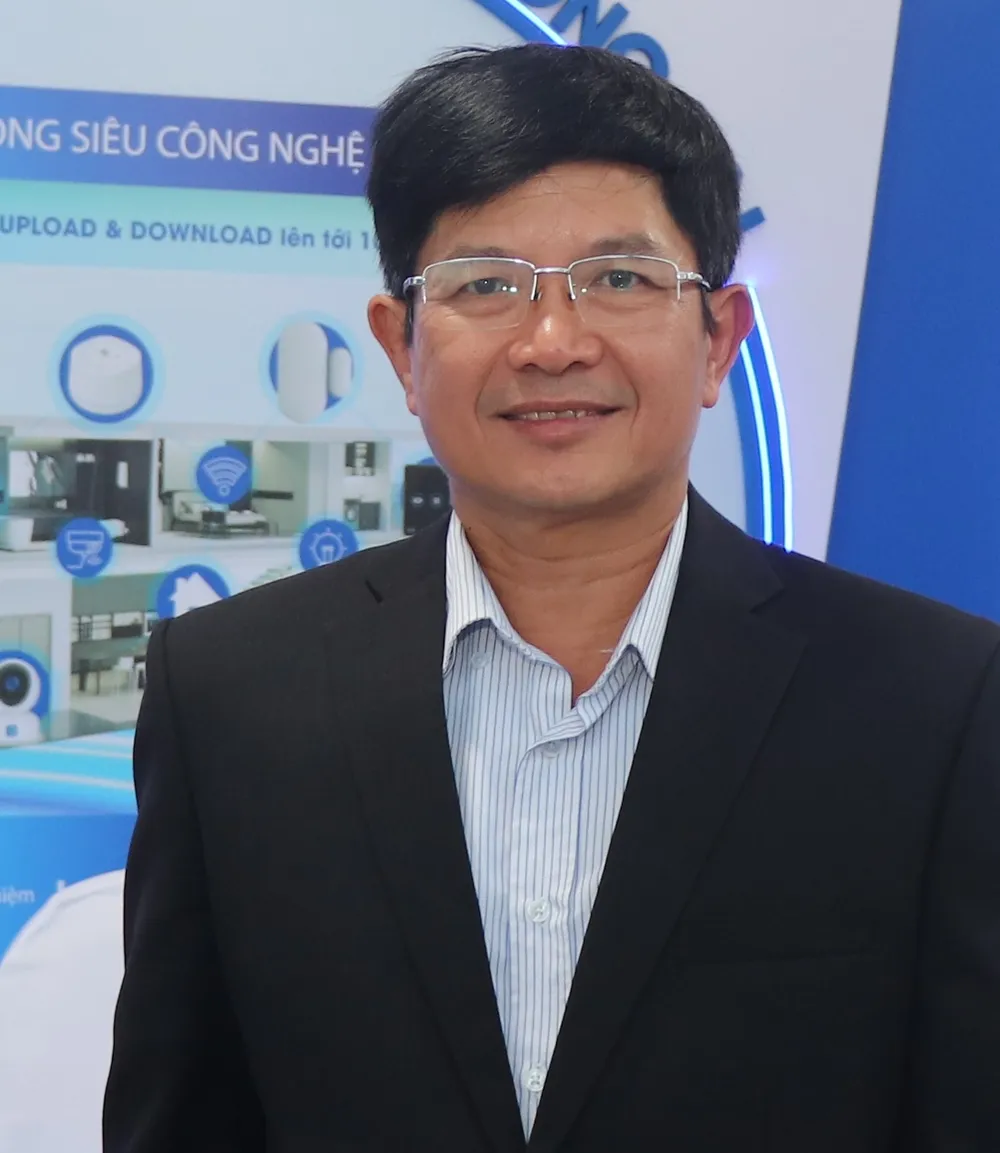

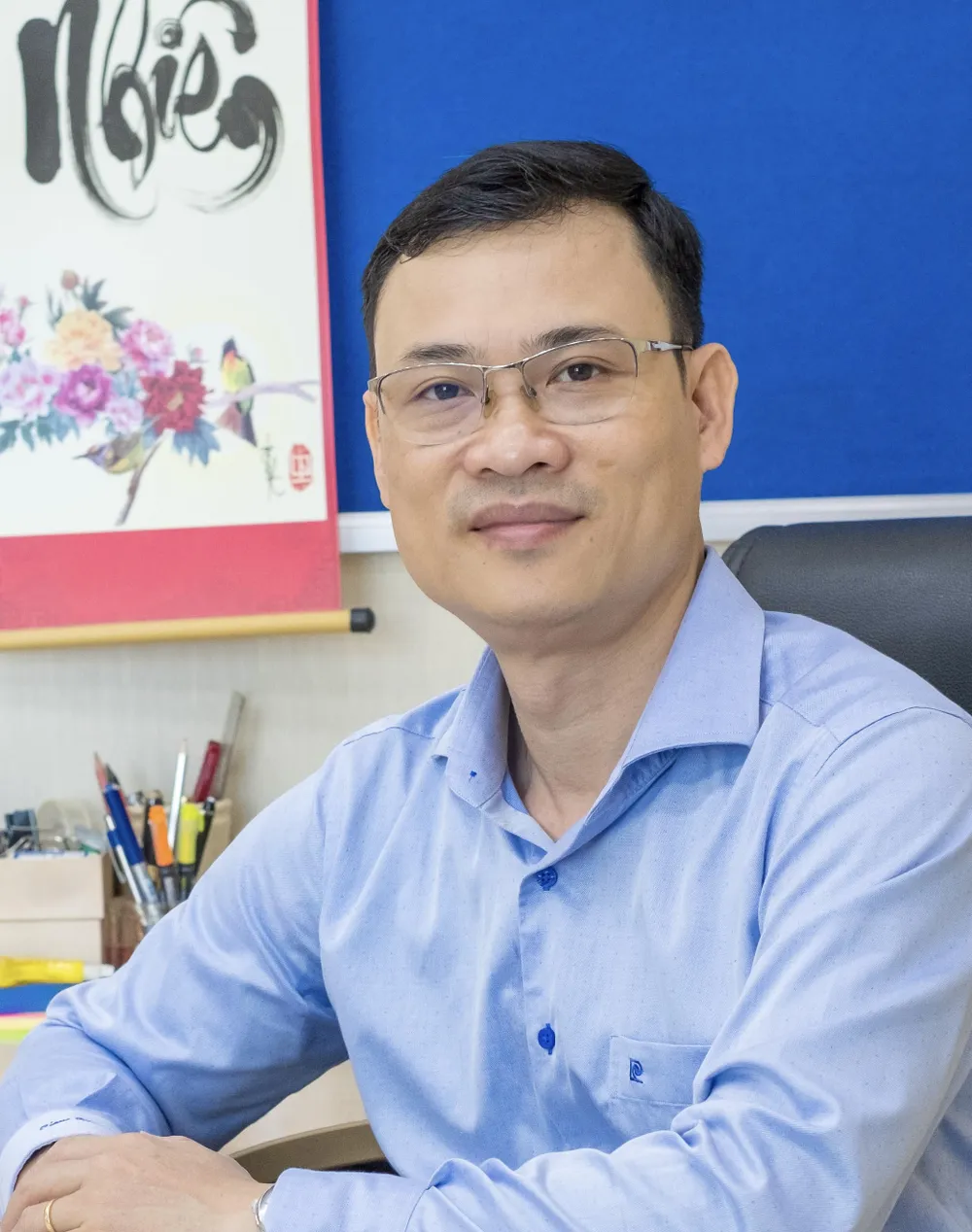
This is an opportunity for readers to learn more about the application of 5G in life and economic sectors, as well as ask questions and exchange directly with experts and representatives of agencies and units deploying digital infrastructure in Ho Chi Minh City.
Dear readers, please visit www.sggp.org.vn to ask questions for the program.
Guest

Mr. Tran Lam Thinh, Deputy Director of VNPT HCMC

Mr. Nguyen Trinh Dinh Hoa, Head of Post and Telecommunications Department, Department of Science and Technology of Ho Chi Minh City

Mr. Nguyen Duc Chung, Deputy Director of Ho Chi Minh City Digital Transformation Center
Interact with readers
Sir, currently VinaPhone has covered 5G in nearly 90% of Ho Chi Minh City, including the central and suburban areas. So, can you tell me specifically how much has been covered so far and which areas have not been covered yet?

Currently, VNPT covers many important places and prioritizes investment efficiency and customer experience in Ho Chi Minh City.
There are about 1,000 new 5G stations in Ho Chi Minh City and 1.5 million 5G subscribers. It is expected that by the end of 2025, this number will be 3,000 stations with 3,000 subscribers.
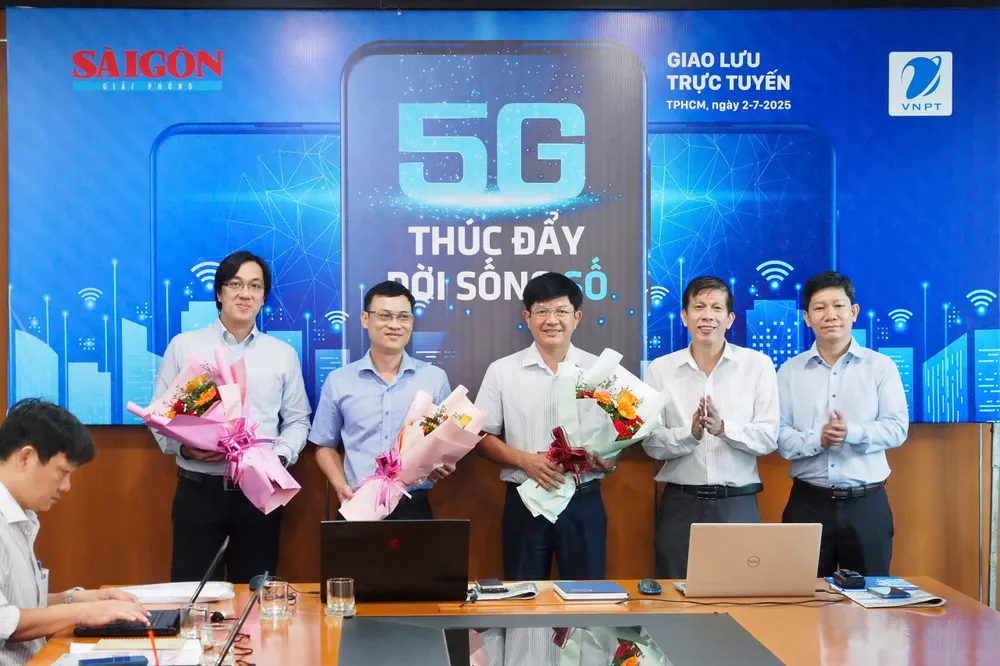
Sir/Madam, how many more 5G stations does VinaPhone plan to deploy to cover the entire area of 6,772 km² of the new Ho Chi Minh City, and what is the specific roadmap for each phase to ensure completion by 2025?

By the end of 2025, VNPT will install about 3,000 BTS stations for the new Ho Chi Minh City area (out of a total of 20,000 stations nationwide).
VNPT has clear criteria in planning, investing, exploiting and optimizing broadcasting stations.
Sir, which areas has VinaPhone prioritized to deploy 5G network first? And why did they choose those places as the first expansion points?

VNPT prioritizes densely populated areas; areas with many local People's Committee facilities; industrial parks; export processing zones; important areas such as ports, airports; Metro, highways...
Investment efficiency and customer experience are the criteria for choosing to develop the BTS network.
When deploying 5G in Ho Chi Minh City, did VNPT/VinaPhone encounter any problems – such as regulations, land funds, licensing procedures or technology – that slowed down the deployment?

VNPT complies with the laws on Posts and Telecommunications issued by the Ministry (formerly the Ministry of Information and Communications) and local regulations. However, after Resolution 57 BCT; Resolution 193/2025/QH15 considering 5G as a pillar for technology development and digital transformation, network operators have much more advantages in developing infrastructure.
In particular, sharing infrastructure between carriers helps with quick deployment and saves a lot of costs.
What is the Department's orientation to take advantage of international cooperation, especially with organizations such as WEF and global C4IR, to improve technology and governance levels in 5G development?

In the context of the fourth industrial revolution taking place strongly, 5G technology is considered a key infrastructure platform to promote the comprehensive digital transformation process. To stay ahead of the trend and shorten the technology gap, strengthening international cooperation, especially with prestigious organizations such as the World Economic Forum (WEF) and the Global Network of Centers for the Fourth Industrial Revolution (C4IR), has become a priority direction of many localities - including Ho Chi Minh City.
Accelerating technological innovation on the basis of global cooperation
In the context that 5G is not only a telecommunications technology but also a strategic infrastructure of the digital economy, it is extremely necessary to take advantage of experience, resources and innovation ecosystems from international organizations. The Department of Information and Communications of Ho Chi Minh City clearly identifies: international cooperation is the lever to improve 5G technology and governance capacity in key sectors such as industry, logistics, smart cities and innovation.
One important direction is to strengthen the connection with the global C4IR Network, coordinated by WEF. This network includes innovation research and policy centers located in countries such as the United States, Japan, South Korea, India, the United Arab Emirates...
C4IR provides a public-private partnership platform where governments, businesses and research institutes jointly experiment with new technology governance models, including 5G networks and applications in Industry 4.0.
Orientation for international cooperation in 5G development
The city orients a number of specific international cooperation pillars to develop 5G technology and governance as follows:
1. Deeply involved in global initiatives and networks
The city will proactively participate in thematic initiatives such as “Smart Transportation”, “Advanced Manufacturing”, “Urban Digital Transformation” within the framework of WEF/C4IR. These are forums to share practices and connect the world’s leading experts in 5G deployment in factories, seaports and logistics centers.
2. Coordinate the development of testing mechanisms (sandboxes) and international standards
WEF is a place to support many governments in building technology policy sandboxes – legal environments for testing innovation. The city aims to cooperate to build a legal framework for testing private 5G networks, data sharing standards, and security governance in the Internet of Things (IoT) environment.
3. Improve management capacity through training and knowledge transfer
International cooperation will help improve the capacity to plan and operate technology policies through online training courses or inviting international experts to advise. The city also plans to send officials to participate in coordination programs at C4IR centers to learn from advanced countries such as Germany, Japan, and Singapore.
4. Calling for high-quality FDI investment in the field of 5G and core technology
Through the WEF network, the city can connect with global technology corporations such as Ericsson, Qualcomm, Cisco – active members of the WEF 5G forums. This is the basis for calling for investment in high-tech parks, software parks, or public-private partnership projects, contributing to building an innovation ecosystem on the 5G platform.
5. Applying the WEF technology governance model and index framework
Governance frameworks like the one developed by WEF will be adapted, tested and localized to serve the purpose of evaluating the effectiveness of 5G deployment in digital transformation in urban areas, businesses and the public sector.
Expanding cooperation to lead in the region
Determined to become a regional hub for innovation and high-tech industry, Ho Chi Minh City is proactively expanding international cooperation not only with global organizations but also with major cities such as Seoul, Singapore, and Dubai – leading places in digital infrastructure development.
5G development is no longer just a technical goal, but a strategy for smart, sustainable, globally competitive socio-economic development. Through international cooperation, especially with WEF and C4IR, the city has the opportunity to improve its technology governance level, standardize policies according to international practices, and gradually realize the vision of national digital transformation.
Sir, up to now, VinaPhone has had about 5 million subscribers using 5G phones, of which 3 million subscribers have activated 5G packages. May I ask how many of these subscribers are in Ho Chi Minh City, and is the city leading? If there are no specific numbers, does VinaPhone have a plan to update or publish local data?

There are nearly 1 million Vinaphone 5G subscribers in Ho Chi Minh City.
This number is currently the highest in the country. If counting Ho Chi Minh City today, this number is more than 2 million Vinaphone 5G subscribers.
This data is collected and reported to the Department of Science and Technology of Ho Chi Minh City and the Department of Statistics of Ho Chi Minh City monthly, quarterly and yearly.
Can you tell me if VinaPhone currently has any special 5G packages for customers in Ho Chi Minh City? For example, data, calling minutes or savings combos? Thank you!

VinaPhone currently has a special incentive policy for all individual customers and households nationwide. In addition to the superior experience of 5G internet speed, 5G WiFi, high-quality voice calls on 5G, VinaPhone 5G also offers the ability to exploit high-quality entertainment ecosystems (My TV 4K/8K), augmented reality/virtual reality applications in learning/entertainment, support for the development of high-quality e-commerce/livestream and secure applications in the digital environment. These packages all have data sharing features, free access to social networks and benefits of the television entertainment ecosystem including MyTV Mobile (with VTVcab, SPOTV, Galaxy packages), VieON, OnPlus...
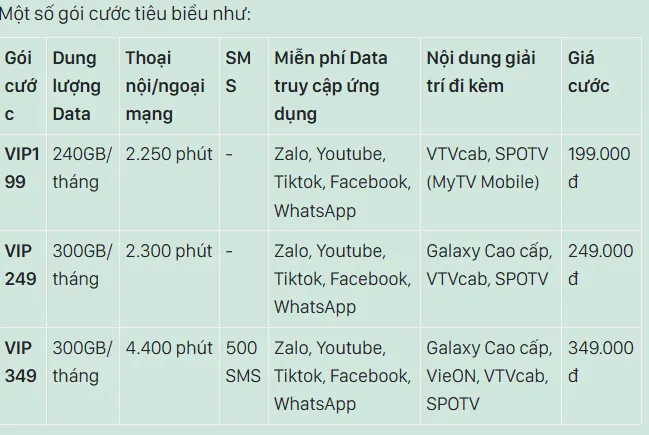
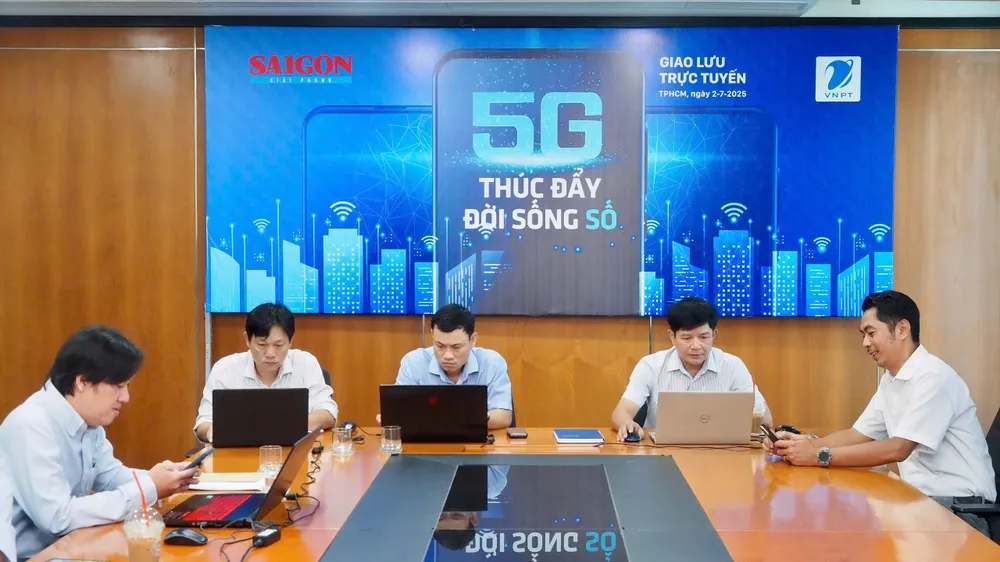
5G can help automate and operate intelligently in manufacturing, ports, and logistics. What specific solutions will the Department prioritize to take advantage of this potential?

In its comprehensive digital transformation strategy, Ho Chi Minh City identifies 5G technology as a key infrastructure for developing smart industry, improving production efficiency and optimizing logistics chains. As the economic - industrial - logistics center of the country, Ho Chi Minh City is implementing a series of specific solutions to take advantage of 5G to innovate the growth model, attract investment and lead the wave of industry 4.0.
5G – A breakthrough driving force for industry and logistics
5G is not only a breakthrough in telecommunications but also a technological platform that opens the era of automated production, real-time operations and comprehensive digital connections. In the context of Ho Chi Minh City's strong transformation to become a smart city, a regional innovation and logistics center, the deployment of 5G application solutions in factories, industrial parks and seaports is considered a strategic lever.
Priority solutions of Ho Chi Minh City
1. Developing specialized 5G network infrastructure in industrial and logistics zones
Ho Chi Minh City prioritizes deploying a private 5G network in key industrial parks such as the High-Tech Park, Tan Thuan Export Processing Zone, VSIP, Cat Lai, Hiep Phuoc Port... to ensure low latency, high speed and stable connection for automation systems.
2. Forming smart factory models
The city is coordinating with technology corporations, network operators and businesses to build a smart factory model, applying 5G to connect industrial robots, production lines, IoT sensors and operating systems (MES, SCADA).
Factories can:
- Real-time monitoring and control of production processes
- Automatic fault detection and predictive maintenance
- Optimizing resource and energy usage
3. Modernizing seaports and logistics centers with 5G
As the largest import-export center in the country, Ho Chi Minh City promotes 5G application at seaports (Cat Lai, SP-ITC, Hiep Phuoc) and logistics centers to:
- Remote control of loading and unloading equipment, cranes and forklifts
- Real-time monitoring of goods and containers using AI sensors and cameras
- Automate warehousing, inventory management, and import and export of goods via 5G-connected AGV/AMR robots
4. Developing a digital industrial ecosystem connected via 5G
The city aims to build a digital ecosystem for industrial parks including network infrastructure, mini data centers, smart management platforms, and network security systems. Thereby, supporting small and medium-sized enterprises to easily integrate into the smart manufacturing value chain.
5. Prioritize piloting and replicating models
Ho Chi Minh City is planning:
- Piloting smart industrial parks with comprehensive 5G applications
- Calling for high-tech investment in the field of 5G – IoT – AI serving production
- International cooperation (WEF, C4IR, global corporations) to test smart production and logistics models according to international standards
With a clear strategy and specific implementation roadmap, Ho Chi Minh City is affirming its pioneering role in applying 5G technology to serve smart industry and logistics. This is not only a step forward in infrastructure but also a reform of the growth model, helping the city:
- Increase labor productivity
- Reduce operating costs
- Attracting high-tech investment capital
In the coming time, Ho Chi Minh City will continue to accompany businesses in the digital transformation process, forming a new industry - a connected, automatic and sustainable industry on the 5G platform.
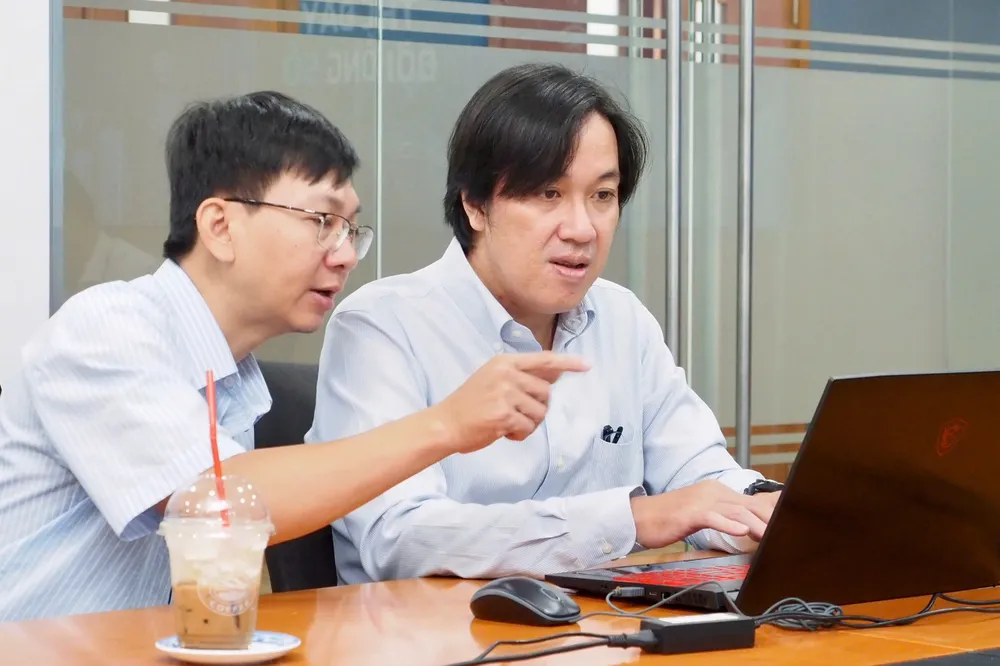
Sir, how does VNPT evaluate the current 5G wave quality in Ho Chi Minh City, especially in densely populated areas and industrial parks - where demand is high and continuous?

VNPT focuses on deploying 5G to enhance user experience and promote digital transformation, especially focusing on practical applications such as smart cities and industry 4.0. VNPT's strategy is not only to provide high-speed connections but also to develop 5G-based value-added services, aiming to become a leading digital service provider.
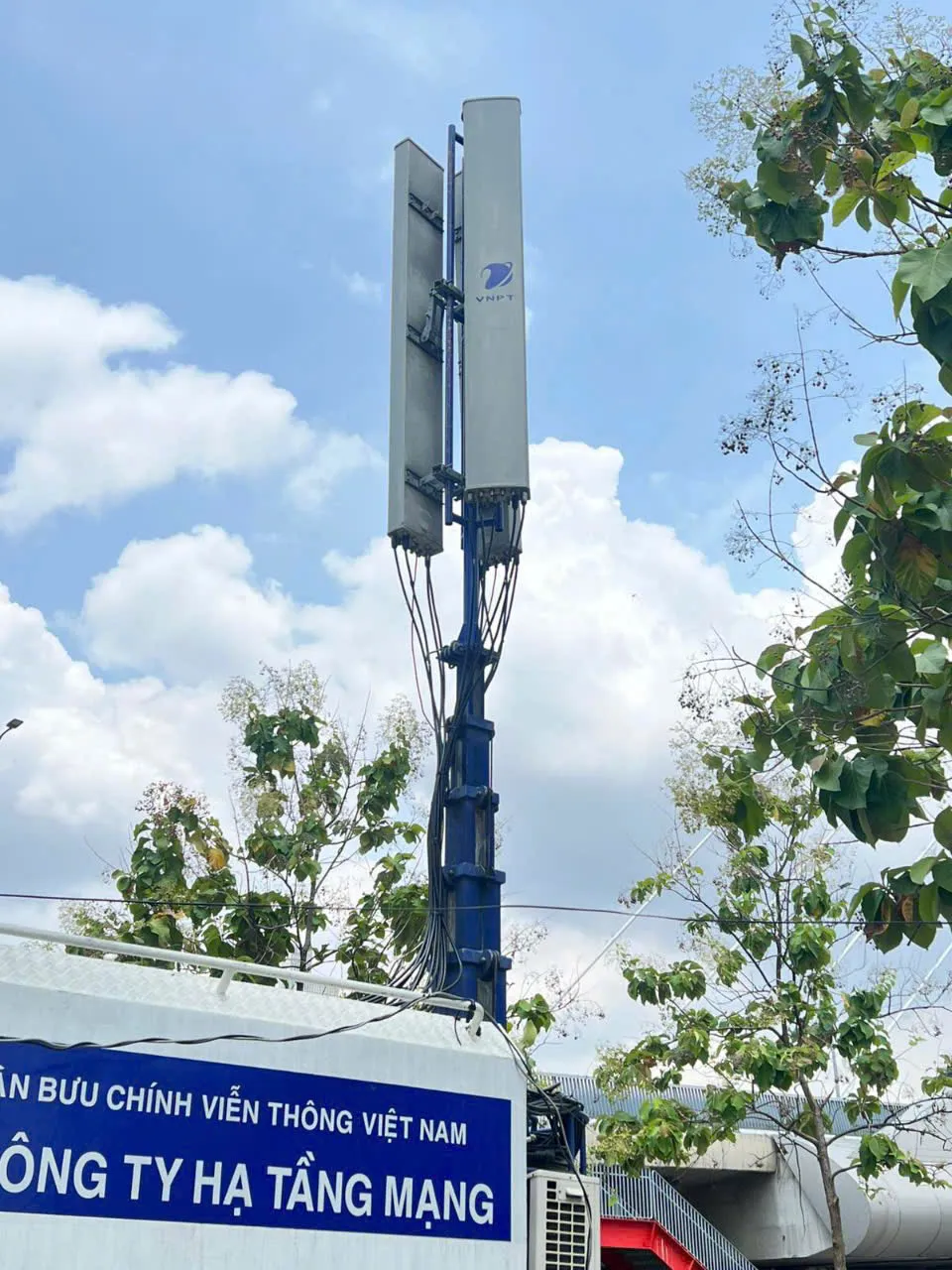
Specifically, VNPT is focusing on the following aspects:
Expanding 5G coverage:
VNPT is actively deploying 5G broadcasting stations to ensure widespread coverage, especially in urban areas and industrial parks.
5G service development:
VNPT not only provides 5G connection but also focuses on developing applications and value-added services on the 5G platform, including solutions for smart cities, industry 4.0, smart healthcare, smart education,...
Enhance user experience
VNPT aims to bring the best 5G experience to users, with high speed, low latency and high reliability.
Cooperation with partners:
VNPT cooperates with domestic and foreign partners to develop 5G solutions and services, and share knowledge and experience.
VNPT identifies 5G as an important factor in Vietnam's digital transformation process, and VNPT is committed to investing heavily in this technology to meet the increasing needs of customers and contribute to the country's socio-economic development.
The 5G quality in Ho Chi Minh City where there are broadcasting stations (about 500 stations) is very good. However, it is not yet fully covered. VNPT regularly expands and controls customer experience.
People are looking forward to 5G that comes with applications such as smart cities, remote medical examination and treatment, and smart transportation. Does VNPT have any such projects in Ho Chi Minh City? How far is the implementation?

Promoting the deployment of new 5G-based applications, especially solutions for developing IoT and private 5G ecosystems, is already included in the roadmap for exploiting digital infrastructure, specifically VNPT's 5G infrastructure.
VNPT is still actively coordinating with the People's Committees of provinces/cities and enterprises across the country to apply solutions to directly serve people, improve the efficiency of state and business management activities, and meet the key tasks set out by the Politburo in Resolution 57.
Example solutions: National Public Service Portal; VNEdu for education; HIS for healthcare; Digital signature and EKYC for banks and businesses; Igate and IOffice for 2-level local governments and businesses are typical solutions and ecosystems of VNPT on fiber optic and 5G platforms.
Sir, after the merger, there is still a gap in telecommunications infrastructure between the old Ho Chi Minh City, Binh Duong and Ba Ria – Vung Tau. Does VNPT have any specific strategy or plan to resolve this gap, to ensure a synchronous telecommunications infrastructure throughout the new Ho Chi Minh City?

After the merger, the Ho Chi Minh City area includes the entire old Ho Chi Minh City, Binh Duong and Ba Ria - Vung Tau. In terms of telecommunications infrastructure - including both terrestrial mobile network infrastructure and fixed broadband infrastructure - there is actually a certain difference between the regions. However, the difference is not large, because in recent years, all three localities are key economic - social development areas of the country, always receiving attention from VNPT for investment and infrastructure development in accordance with the needs of management and administration, serving businesses and people.
From now until the end of 2025, VNPT will focus on comprehensively reviewing and optimizing the network structure throughout Ho Chi Minh City, ensuring data connectivity, synchronizing infrastructure architecture, aiming to build a unified - modern - efficient network system, well meeting the digital transformation requirements of the government and the service needs of the people.
Ho Chi Minh City is now expanding, many suburban areas, rural areas, mangrove forests, new industrial zones also need good connectivity. So does the Department have any plans to ensure 5G infrastructure in these places?

After the merger, the new Ho Chi Minh City has officially been in operation since July 1, 2025, so the Department of Science and Technology will organize a comprehensive review of the 5G network infrastructure in this area as soon as possible to fully assess the current situation and propose appropriate solutions to promote the development of 5G infrastructure to ensure ahead of schedule completion of the goal of 5G coverage for the entire new Ho Chi Minh City.
It is expected that in the third quarter of 2025, the Department of Science and Technology will submit to the Ho Chi Minh City People's Committee for approval the 5G infrastructure development plan for the 2025-2027 period, aiming to cover more than 90% of Ho Chi Minh City with 5G, including 100% of high-tech zones, industrial zones, export processing zones, administrative centers and densely populated areas.
Currently, telecommunications enterprises are facing some difficulties and obstacles in the process of developing 5G mobile information stations in rural areas and mangrove areas, specifically the installation of BTS stations on agricultural land, forest land, etc. and in the use of land combining agricultural multi-purpose with the construction of telecommunications works.
However, this content has been guided in the Telecommunications Law, Land Law and Decree No. 102/2024/ND-CP dated July 30, 2024 detailing the implementation of a number of articles of the Land Law. In the coming time, the Department of Science and Technology will coordinate with the Department of Agriculture and Environment, the Department of Construction, the People's Committees at the commune level and relevant units to promptly guide and implement this content.
Sir, does the Center have any plans to utilize 5G technology in developing AI, IoT and big data applications, especially in areas such as smart transportation, digital healthcare and digital education?

In the coming time, to effectively and successfully deploy AI, IoT and big data applications, especially in fields such as smart transportation, digital healthcare and digital education, it is impossible not to apply them on the 5G platform.
Therefore, this is a necessary requirement that the center sets for product suppliers right from the design stage. For deployed products, the center will coordinate with the leading agencies to conduct research and propose solutions to upgrade and improve products to make the most of 5G technology.
Sir, how many 5G stations does VinaPhone plan to add to cover the entire 6,772 km² area of the new Ho Chi Minh City? And where will these stations be deployed to ensure coverage of the entire area?

By the end of 2025, VNPT will install about 3,000 more 5G BTS stations to cover the new Ho Chi Minh City, with about 20,000 stations nationwide to receive support from the government according to Resolution 193/2025/QH15 and Decree 88/2025/ND-CP.
These stations have criteria for deployment to achieve the best user experience and investment efficiency. For example: Densely populated areas; Industrial parks - Export processing zones; Airports; highways; port clusters...
After merging administrative units, there may still be differences in technical standards or licensing procedures between the three old localities. So how will VNPT handle and unify this so that the 5G deployment is not interrupted, sir?

The difference in infrastructure including both terrestrial mobile telecommunications infrastructure and fixed broadband telecommunications infrastructure between the old localities is actually a difference but not significant, because in recent years, these localities have all been key areas for economic and social development of the whole country, so VNPT has always paid attention to investment and construction, infrastructure to meet the needs of serving the direction and economic and social development of the localities and people.
During the period from now until the end of 2025, VNPT will focus on reviewing the network structure of these localities, to connect data and unify the complete network structure, to better serve the government and people after the merger.
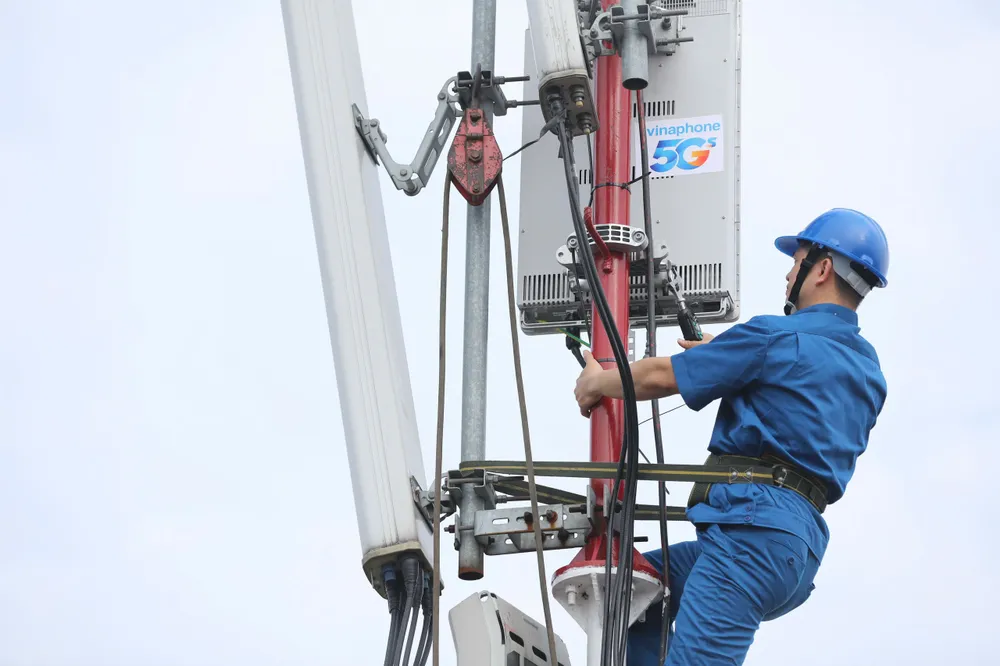
Sir, with the formation of new megacities, how will the 5G frequency and network resource allocation mechanism be adjusted to suit the scale, population density and increased usage demand?

Regarding the current allocation of 5G frequency and network resources, it is not only when VNPT becomes a province that it raises the issue and conducts research on how to apply it. Previously, in the process of developing the wireless network from 2G, 3G, 4G in the past and 5G today, VNPT has had sets of standards and principles to help effectively exploit frequency resources and network resources. Accordingly, depending on the characteristics of the population and traffic needs, when designing annual network development plans, VNPT always considers adjusting and arranging the allocation of service resources according to a number of main criteria: Number of users, connection distance, and user service needs.
Sir, what technical solutions is VinaPhone currently applying to ensure seamless 5G connection when deployed through complex terrain areas such as rivers, canals, mangrove forests or isolated areas?

Through reviewing the 5G planning in Ho Chi Minh City, the areas with isolated waves outside the river and mangrove forests also include: Highway construction sites, urban areas reclaimed from the sea, large urban areas with an area of hundreds of hectares...
To ensure 5G coverage, VNPT will deploy a number of solutions such as adding new broadcasting stations, field stations, and mobile vehicles to promptly meet 5G connection needs. Adding more frequency bands in the Low Band group for sparsely populated areas and Mid Band for densely populated areas to ensure coverage quality and bandwidth provided to users.
To limit interference, during the process of developing new stations or maintaining existing stations, VNPT has a monthly plan to conduct wave measurements on stations to evaluate the wave quality in the direction of users' service experience, thereby detecting areas of interference and having plans to calibrate antennas, adjust frequencies and transmission power to help minimize wave interference between neighboring stations.
Sir, when deploying 5G in key industrial zones with high density of transmission stations, does VNPT have any measures to reduce interference and ensure stable connection quality?

To limit interference, during the process of developing new stations or maintaining existing stations, VNPT has a monthly plan to conduct wave measurements for stations to evaluate the wave quality in the direction of users' service experience, thereby detecting areas of interference and having plans to calibrate antennas, adjust frequencies and transmission power to help minimize wave interference between neighboring stations.

Sir, what is the Center's international cooperation plan to update new 5G technologies and solutions to more effectively serve the city's digital transformation activities?

International cooperation and promotion is one of the activities that the center has included in its annual work program and actively implemented. Without international cooperation and support, especially from countries, organizations, schools and institutes with strengths and successful results, the digital transformation work in the city will not be able to promptly access changes in technology and modern organizational models.
In recent times, the Ho Chi Minh City Digital Transformation Center has implemented specific cooperation activities with the World Bank, RMIT University, the British Consulate General in Ho Chi Minh City, Fulbright University, and Google AI. These cooperation activities have initially had positive and effective results.
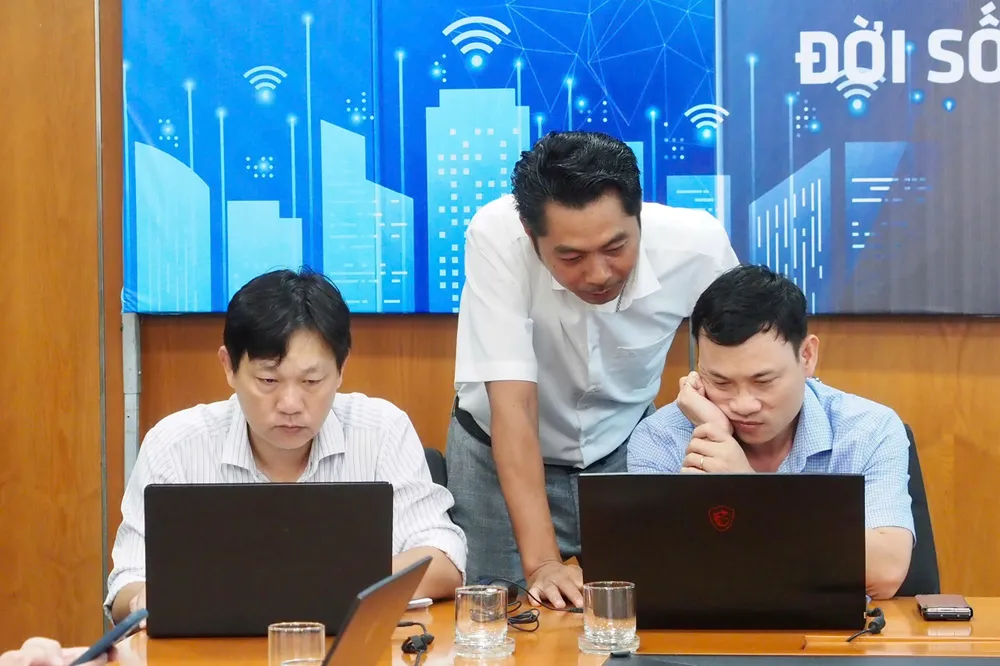
Sir, how will VNPT ensure economic efficiency when deploying 5G in sparsely populated areas such as rural and suburban areas? Is there any solution to both cover the network and not incur losses?

To ensure economic efficiency when deploying 5G in sparsely populated areas such as rural and suburban areas, VNPT has been actively promoting the following solutions:
- Increase coverage, through increasing transmission power and using low-band frequencies to reduce the number of stations that need to be invested in, while also ensuring service quality.
- Promote brand awareness, deploy sales activities to existing residents to increase revenue/investment cost efficiency.
- Using digital solutions and applying high technology to automate station operations, helping to reduce operating costs per station.
Basically, VNPT manages the overall efficiency, not just each station. Make up for expenses with revenue. Seize opportunities. Some stations with political missions must still exist...
Currently, the Center is developing many online public services. So how will 5G be applied to make those services faster and more stable, especially for services that require high speed and low latency?

Determining high speed is essential and fundamental in the current stage, so the requirement to operate on the 5G platform will be set right from the product design and development stage.
What plans does the Department of Science and Technology of Ho Chi Minh City have to coordinate with telecommunications enterprises and solution enterprises to promote 5G application in high-tech zones, industrial zones and smart urban areas in the new city after the merger?

On April 1, 2025, the Government issued Resolution No. 71/NQ-CP on promulgating the Action Program to implement Resolution No. 57-NQ/TW dated December 22, 2024 of the Politburo on breakthroughs in science and technology development, innovation and national digital transformation.
In particular, the development of 5G mobile information network is one of the technical foundations to effectively implement the goals of Resolution No. 57-NQ/TW, especially in digital transformation and digital infrastructure development.
To implement the above Resolutions, the city has issued action plans No. 459-KH/TU and No. 4354/KH-UBND, which set the goal of completing 5G network coverage to 100% of the city's population.
Therefore, the Department of Science and Technology has been coordinating with telecommunications enterprises to deploy and initially achieve the following results: Ho Chi Minh City (old) has developed 2,613 5G BTS stations, accounting for more than 20% of the total number of 5G BTS stations nationwide, meeting more than 40% of the 5G coverage needs of city residents. The speed of providing internet access services via 5G network reaches from 300Mbps to 400Mbps compared to the prescribed speed of more than 100Mbps.
For high-tech parks, concentrated information technology parks or industrial parks and export processing zones with many organizations and businesses operating, these places have been prioritized by telecommunications enterprises to develop high-speed 5G network infrastructure as well as high-speed and ultra-high-speed broadband transmission fiber optic infrastructure of more than 1Gbps.
Sir, in the process of expanding the 5G network, what measures will the Department take to ensure information safety and security, especially when the number of IoT-connected devices is increasing rapidly?

The sharp increase in the number of IoT devices does not mean that information security is lost. The Department of Science and Technology will closely coordinate with the competent authorities in charge of information security, namely the Ho Chi Minh City Police and network operators, to implement security standards right from the network infrastructure, require terminal equipment inspection, and promote businesses to apply encrypted transmission technology and real-time network monitoring to ensure data security.
At the same time, the Department of Science and Technology will coordinate with relevant units to guide, propagate and recommend units and people to implement measures and apply technical safety standards prescribed by the Government, the Ministry of Science and Technology and competent units to ensure information safety and security in the process of deploying, expanding, connecting and using 5G networks and IoT applications.
Sir, in the current Ho Chi Minh City area – including Binh Duong and Ba Ria – Vung Tau areas – does VNPT have plans to cooperate with any businesses to develop 5G applications for industry, logistics and production infrastructure?

After the merger, Ho Chi Minh City includes Binh Duong and Ba Ria - Vung Tau (old). In fact, there is a certain difference in telecommunications infrastructure between these areas, including both mobile and fixed broadband infrastructure. However, the difference is not too large, because in recent years, all three places are key economic zones in the South, always receiving thorough investment from VNPT, meeting well the needs of directing and operating, developing the economy - society and serving the people.
From now until the end of 2025, VNPT will focus on restructuring the entire telecommunications network of Ho Chi Minh City, ensuring data connectivity, synchronizing infrastructure and optimizing network capacity, effectively serving digital government, digital economy and digital society.
In particular, in the areas that used to be Binh Duong and Ba Ria - Vung Tau provinces, which have a high density of industrial parks, seaports and warehouses, VNPT not only promotes 5G coverage but also introduces and provides digital transformation solutions for the government, businesses and people to improve operational efficiency, management and better serve local development.
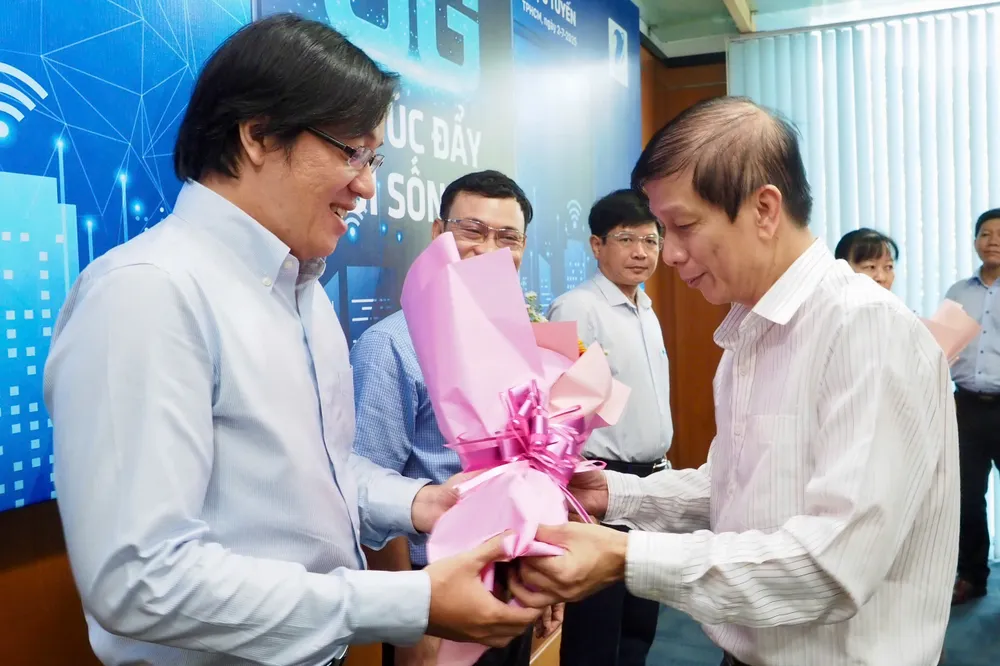
Could you please share your opinion on the development of 5G mobile network in Vietnam in recent times? What are you most proud of and what needs improvement?

In recent times, Vietnam has made significant progress in developing and deploying 5G technology. Although there are still challenges, the Government’s commitment and the efforts of network operators have created a solid foundation for the future of the digital era. Some specific examples:
- Infrastructure Deployment Progress and Coverage: Vietnam has officially commercialized 5G, with major carriers such as Viettel, VNPT (VinaPhone) and MobiFone actively deploying infrastructure.
Number of 5G BTS stations: By the end of the first quarter of 2025, Vietnam had installed 10,600 5G BTS stations. The Government's goal is to strive to deploy at least 55,000 new 5G broadcasting stations in 2025.
Coverage: Viettel has deployed 5G in 34 cities and provinces nationwide. VinaPhone and MobiFone are also expanding their coverage in major cities such as Hanoi and Ho Chi Minh City, and gradually expanding to other cities and provinces (Source: Law Library, New Newspaper). - Network Speed and Quality: 5G speeds in Vietnam have improved significantly after major carriers increased deployment and commercialization.
National average speed (April 2025) : 5G network achieved an average download speed of 354.88 Mbps and upload speed of 94.92 Mbps. This is the strongest improvement since February 2024 (Source: Dan Tri Newspaper, VnExpress).
Speed by network operator (April 2025) : Viettel is the network operator with the best 5G speed with 364.42 Mbps (download) and 97.6 Mbps (upload). VNPT and MobiFone reached 158.68 Mbps and 162.82 Mbps respectively (Source: VnExpress). - Number of 5G Subscribers: The number of 5G users in Vietnam is growing rapidly after network operators accelerated commercialization.
Viettel: In early March 2025, Viettel announced that it had 5.5 million 5G users. By April 2025, this number increased to 6.2 million 5G users (Source: VnEconomy, Dan Tri Newspaper).
VinaPhone: Reaching 3 million 5G users by early March 2025 (Source: VnExpress).
MobiFone: Providing 5G from the end of March 2025 and reaching 2.5 million users after one month of deployment (Source: VnExpress). - Government Role and Development Orientation: The Vietnamese Government has shown a strong leadership role in promoting 5G, learning from the experiences of pioneering countries:
Clear Strategy and Targets: The Ministry of Information and Communications has set a target of 5G coverage for more than 99% of the population by 2030 and reaching 90 million 5G subscribers (Source: GSMA, mic.gov.vn).
Spectrum Allocation Policy: Vietnam has successfully auctioned 2.6 GHz and 3.5 GHz spectrum for 5G, opening up opportunities for widespread deployment of 5G networks (Source: mic.gov.vn).
Investment Support : Resolution 193/2025/QH15 and Decree 88/2025/ND-CP have stipulated financial support policies for telecommunications enterprises. Specifically, network operators deploying 20,000 new 5G BTS stations in 2025 will be supported with 15% of the total investment value (Source: VnExpress, vneconomy.vn). This demonstrates the Government's strong commitment to reducing the cost burden for network operators.
Promoting Commercialization and Application: The Government is promoting the commercialization of 5G to boost economic growth and encourage 5G applications in areas such as industrial production, seaports, mining, and smart transportation (Source: qdnd.vn). Shutting down 2G waves is also a strategic move to optimize spectrum resources for 4G and 5G.
In summary, the development of 5G in Vietnam in recent times shows a positive picture with gradually expanding infrastructure, improved network speeds and rapidly growing subscriber numbers. The leading role of the Government through investment support policies, reasonable spectrum allocation and clear goals are key factors driving this process. Although there are still challenges in terms of costs and coverage optimization, Vietnam is on the right track for 5G to become a solid foundation for the development of digital life and digital economy in the future.
Sir, how does the Center plan to coordinate with telecommunications businesses to promote the development of a digital service ecosystem based on the 5G network, to better serve people and businesses in Ho Chi Minh City?

The Ho Chi Minh City Digital Transformation Center always wishes to accompany and is ready to receive new solutions and products on the 5G platform in the pilot phase to evaluate and propose applications in the city to enrich and diversify digital products and services serving people and businesses in the spirit of Resolution 57-NQ/TW.
Sir, how does the Department of Science and Technology coordinate with telecommunications enterprises such as VNPT in deploying and expanding 5G coverage, as well as improving service quality for people and businesses in Ho Chi Minh City?

Ho Chi Minh City (new) officially operates a 2-level local government from July 1, 2025, so the Department of Science and Technology organizes a comprehensive review of 5G infrastructure in this area as soon as possible to fully assess the current situation and propose appropriate solutions to promote the development of 5G infrastructure to ensure ahead of schedule completion of the 5G coverage target in Ho Chi Minh City (new).
It is expected that in the third quarter of 2025, the Department of Science and Technology will submit to the Ho Chi Minh City People's Committee for approval the 5G infrastructure development plan for the 2025-2027 period, aiming to cover more than 90% of the Ho Chi Minh City area, including 100% of high-tech zones, industrial zones, export processing zones, administrative centers and densely populated areas.
In 2025, the Department of Science and Technology directs mobile telecommunications enterprises to prioritize the expansion of 5G coverage in areas with high demand, key areas such as: public administrative areas; historical - cultural relics, key tourist areas; medical facilities; colleges and universities; traffic hubs; densely populated areas, commercial centers, key rural areas; high-tech zones, concentrated information technology zones, industrial parks, export processing zones, stations, ports, airports... and have quality mobile broadband Internet access services with download speeds over 5G networks from 100Mbit/s - 500Mbit/s.
Sir, how many BTS stations has VNPT installed for the 5G network? And which areas does this network specifically cover? Where can people and businesses use it?

By the end of 2024, VNPT had deployed 3,000 5G radio stations nationwide. By the end of 2025, it is expected to have 20,000 stations. VNPT has covered the whole country (34 new provinces and cities).
VNPT focuses on deploying 5G to enhance user experience and promote digital transformation, especially focusing on practical applications such as smart cities and industry 4.0. VNPT's strategy is not only to provide high-speed connections but also to develop 5G-based value-added services, aiming to become a leading digital service provider.
Specifically, VNPT is focusing on the following aspects:
Expanding 5G coverage:
VNPT is actively deploying 5G broadcasting stations to ensure widespread coverage, especially in urban areas and industrial parks.
5G service development:
VNPT not only provides 5G connection but also focuses on developing applications and value-added services on the 5G platform, including solutions for smart cities, industry 4.0, smart healthcare, smart education,...
Enhance user experience
VNPT aims to bring the best 5G experience to users, with high speed, low latency and high reliability.
Sir, compared to other countries in the region and the world, where does Vietnam's 5G network currently stand? What level of coverage, speed or application level are we at?

Based on recently updated reports and data, the position of Vietnam's 5G mobile network compared to other countries in the region and the world can be assessed as follows:
- About 5G Speed: Vietnam is making significant improvements in 5G speed, achieving positive positions on the global and regional map.
Global : According to a report by VnExpress and Thanh Nien in March 2025 (based on data from Ookla or similar statistical sources), Vietnam's overall mobile internet speed (including both 4G and 5G) has entered the Top 20 or Top 22 countries with the fastest mobile internet in the world. Although this figure is a combination of both 4G and 5G, the improvement of 5G contributes greatly to this position.
More specifically about 5G, according to VNNIC (Vietnam Internet Center), the average speed of the 5G network nationwide in April 2025 reached 354.88 Mbps for download and 94.92 Mbps for upload (Source: Dan Tri Newspaper, VnExpress). This is a very good speed, competitive with many developed countries.
Southeast Asia : In Southeast Asia, Vietnam is rising strongly. Countries like South Korea and Singapore are still the leaders in global and regional 5G speeds. However, Vietnam is gradually catching up and even surpassing some countries in actual 5G speeds.
Some older data sources (Q3-2021) from Ookla may show that Thailand and the Philippines had more 5G coverage than Vietnam at that time. However, with the recent rapid deployment and commercialization, Vietnam has significantly narrowed the gap in both speed and coverage. Vietnam's current 5G average speed of 354.88 Mbps is very competitive in the region, placing Vietnam among the countries with the best 5G speeds in ASEAN.
2. About Coverage Area and Deployment Scale
In terms of deployment scale and coverage , Vietnam is making rapid progress, but still needs more time to catch up with markets that have deployed 5G early and strongly.
China and South Korea: Still the two leading countries in the world in terms of the number of 5G base stations and coverage. China has millions of 5G stations, while South Korea has a very high coverage rate and number of 5G subscribers per capita. Vietnam still has a long way to go to reach this level.
In the Southeast Asia region: Thailand , Singapore, and the Philippines are countries where 5G has been widely deployed early. However, Vietnam has been accelerating significantly. With the target of 55,000 new 5G broadcasting stations in 2025 (Source: Government Report, VnExpress) and having 10,600 5G BTS stations by the end of the first quarter of 2025, Vietnam is showing strong determination to expand coverage.
3. About the Number of 5G Subscribers: The number of 5G subscribers in Vietnam is growing impressively after network operators commercialized the service.
According to statistical reports by April 2025, Vietnam had about 6.2 million 5G subscribers of Viettel, 3 million of VinaPhone, and 2.5 million of MobiFone (Source: VnEconomy, VnExpress, Dan Tri Newspaper). In total, there were more than 11 million 5G subscribers after only a few months of strong commercialization.
Compared to larger and earlier deployed markets, this figure shows that Vietnam is having a very good subscriber growth rate. GSMA (World Mobile Association) forecasts that Southeast Asia will have about 680 million 5G subscribers by the end of 2030 (Source: tinnhanhchungkhoan.vn). With Vietnam's target of 90 million 5G subscribers by 2030 (Source: GSMA, mic.gov.vn), Vietnam is expected to account for a significant portion of the total number of 5G subscribers in the region.
So overall, Vietnam's 5G mobile network is in a good position and is growing rapidly compared to other countries in the Southeast Asian region, especially in terms of network speed . In terms of coverage scale and number of subscribers , Vietnam is on track to catch up and will become one of the leading 5G markets in the region in the coming years, thanks to the strong commitment of the Government and the investment efforts of network operators. However, it is still necessary to continue to make efforts to be on par with the world's leading 5G powers such as Korea or China in terms of both technological depth and comprehensive coverage.
How has the Ho Chi Minh City Digital Transformation Center built a strategy to take advantage of 5G infrastructure to serve the city's digital transformation programs in the 2025-2030 period, sir?

The construction, consultation on strategies, programs, and plans for digital transformation in general and the development of digital infrastructure and telecommunications infrastructure will be chaired by the Department of Science and Technology of Ho Chi Minh City. The Digital Transformation Center is the coordinating unit, proposing related contents. For digital applications deployed by the center in the coming time, 5G technology will be a requirement that needs to be met.
Can VNPT leaders share specifically: are there any factories, workshops, or ports using VNPT’s 5G yet? What are they using 5G for – device control, monitoring, automation? What are the initial results?

In addition to individual customers, VNPT now has customers who are businesses operating in the fields of electricity transmission, clean water, and smart agriculture.
For example, IoT 5G VNPT contracts with HCM electricity to manage electrical cabinets.
IoT with Ho Chi Minh City water supply to remotely manage water meters.
IoT for agriculture; climate change projects; IOCs for provinces and cities.
Fleet tracking solutions for Logistics businesses...
Very effective.
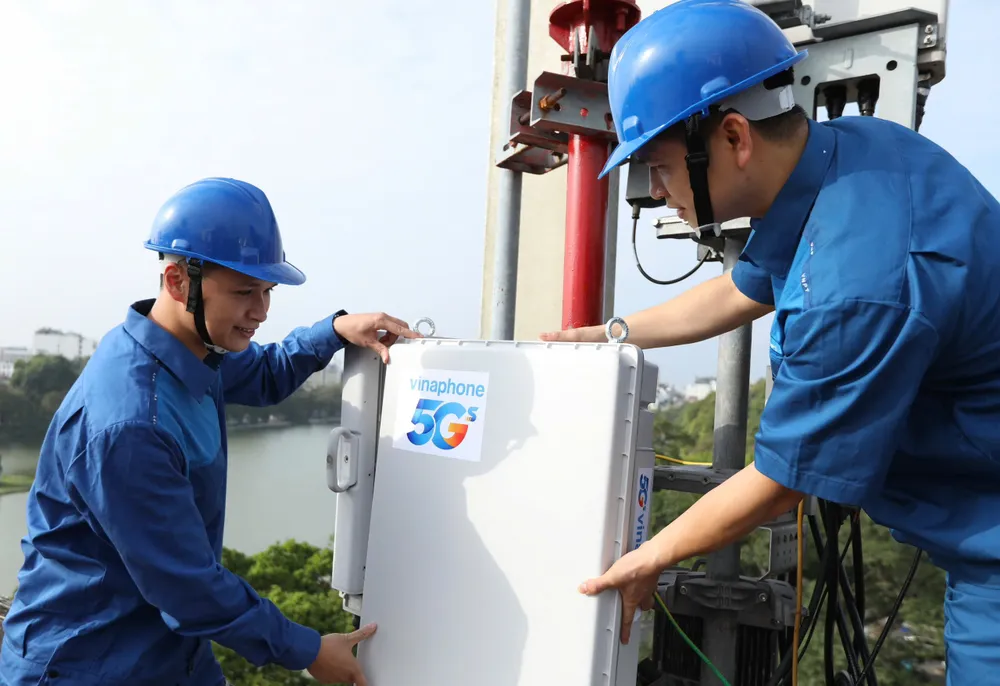
Sir, after Ho Chi Minh City merges with Binh Duong and Ba Ria - Vung Tau, what solutions will the Department prioritize to synchronize telecommunications infrastructure and promote digital transformation between these localities?

Passive telecommunications infrastructure, including 5G network infrastructure in Ho Chi Minh City, Binh Duong and Ba Ria - Vung Tau before the merger, is implemented according to the Planning of each locality, specifically:
- In Ho Chi Minh City, implement according to Decision No. 3192/QD-UBND dated June 23, 2016.
- In Binh Duong, implement according to Decision No. 2200/QD-UBND dated August 25, 2016.
- In Ba Ria - Vung Tau, implement according to Decision No. 1771/QD-UBND dated August 21, 2016.
The merger process of the three localities of Binh Duong, Ba Ria - Vung Tau and Ho Chi Minh City will come into operation from July 1, 2025, so the Department of Science and Technology will organize a comprehensive review of the 5G infrastructure in the new Ho Chi Minh City as soon as possible to fully assess the current situation and propose appropriate solutions to promote the development of 5G infrastructure to ensure ahead of schedule completion of the goal of 5G coverage for the entire new Ho Chi Minh City.
Based on the Telecommunications Law No. 24/2023/QH15, Decree No. 163/2024/ND-CP, relevant regulations on guidelines for planning passive telecommunications infrastructure and the results of a comprehensive review of the current status, the Department of Science and Technology will coordinate with relevant units to advise the Ho Chi Minh City People's Committee to consider and approve the Telecommunications Infrastructure Planning in Ho Chi Minh City for the period 2025 - 2030, with a vision to 2035 in a synchronous and unified manner throughout the new Ho Chi Minh City area.
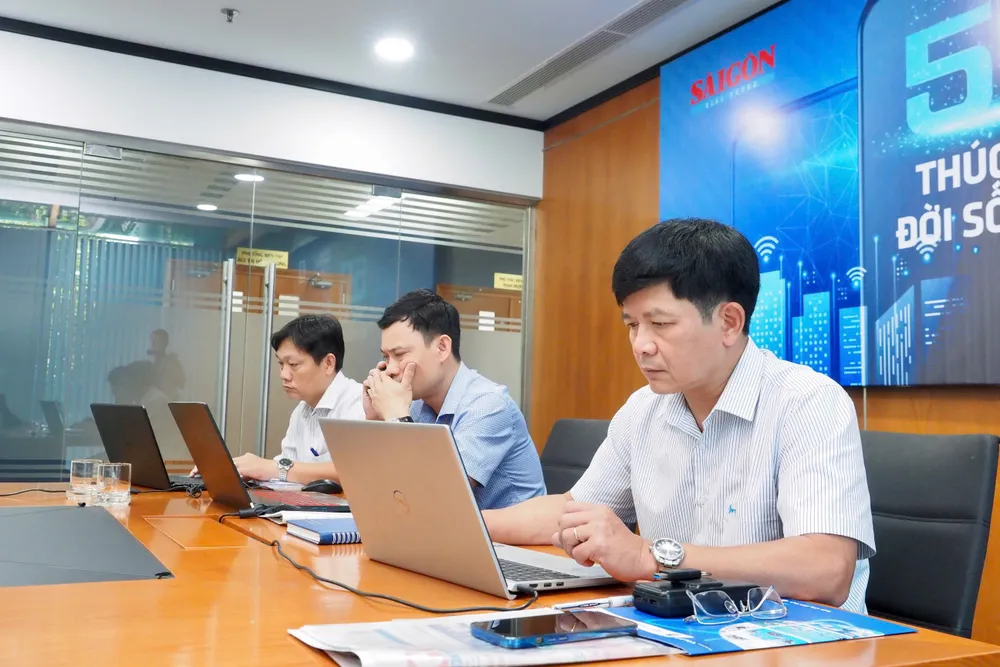
Sir, does the Department of Science and Technology of Ho Chi Minh City have a specific roadmap to ensure the goal of 100% 5G network coverage throughout the new Ho Chi Minh City area, including the newly merged areas?

According to the Government's orientation for developing telecommunications infrastructure in Resolution No. 71/NQ-CP on promulgating the Action Program to implement Resolution No. 57-NQ/TW dated December 22, 2024 of the Politburo on breakthroughs in science and technology development, innovation and national digital transformation and the Information and Communications Infrastructure Planning in Decision No. 36/QD-TTg dated January 11, 2024, the goal is that by 2030, the 5G mobile broadband network will cover 99% of the country's population, with the minimum average download speed of 5G network service quality being 100Mb/s.
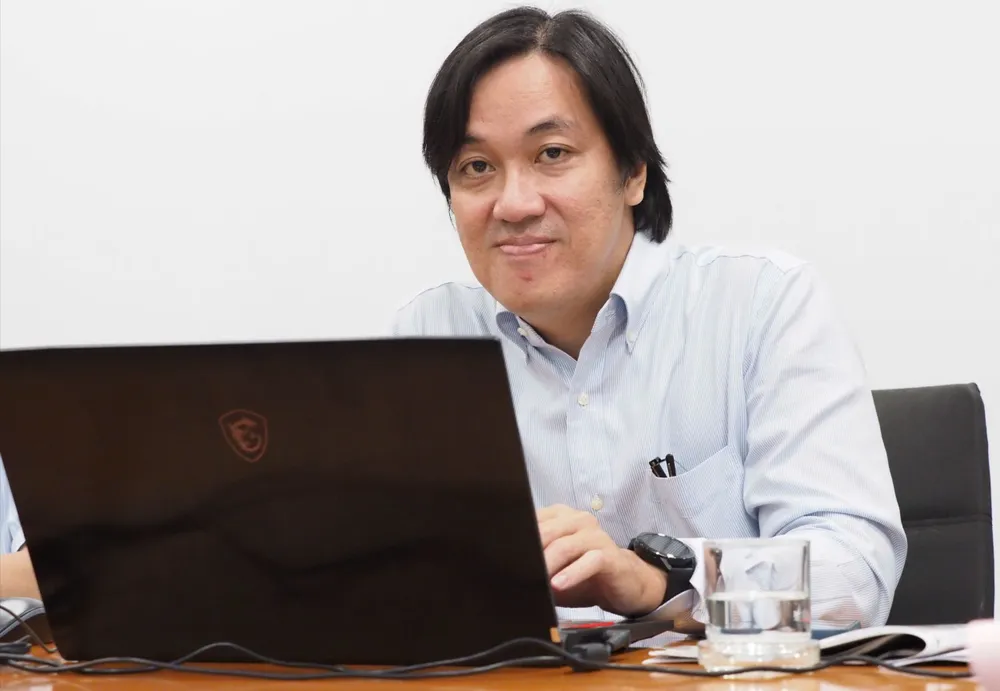
Ho Chi Minh City (new) officially operates a 2-level local government from July 1, 2025, so the Department of Science and Technology organizes a comprehensive review of 5G infrastructure in this area as soon as possible to assess the current situation and propose appropriate solutions to promote the development of 5G infrastructure to ensure ahead of schedule completion of the goal of 5G coverage for the entire Ho Chi Minh City (new).
It is expected that in the third quarter of 2025, the Department of Science and Technology will submit to the Ho Chi Minh City People's Committee for approval the 5G infrastructure development plan for the 2025-2027 period, aiming to cover more than 90% of the Ho Chi Minh City area, including 100% of high-tech zones, industrial zones, export processing zones, administrative centers and densely populated areas.
Investing in 5G networks requires both high technology and a large economic problem. So, please tell us, VNPT leaders: What is VNPT's upcoming 5G development strategy, and how will it be implemented to balance efficiency and cost?

VNPT focuses on deploying 5G to enhance user experience and promote digital transformation, especially focusing on practical applications such as smart cities and industry 4.0. VNPT's strategy is not only to provide high-speed connections but also to develop 5G-based value-added services, aiming to become a leading digital service provider.
Specifically, VNPT is focusing on the following aspects:
Expanding 5G coverage:
VNPT is actively deploying 5G broadcasting stations to ensure widespread coverage, especially in urban areas and industrial parks.
5G service development:
VNPT not only provides 5G connection but also focuses on developing applications and value-added services on the 5G platform, including solutions for smart cities, industry 4.0, smart healthcare, smart education,...
Enhance user experience
VNPT aims to bring the best 5G experience to users, with high speed, low latency and high reliability.
Cooperation with partners:
VNPT cooperates with domestic and foreign partners to develop 5G solutions and services, and share knowledge and experience.
VNPT identifies 5G as an important factor in Vietnam's digital transformation process, and VNPT is committed to investing heavily in this technology to meet the increasing needs of customers and contribute to the country's socio-economic development.
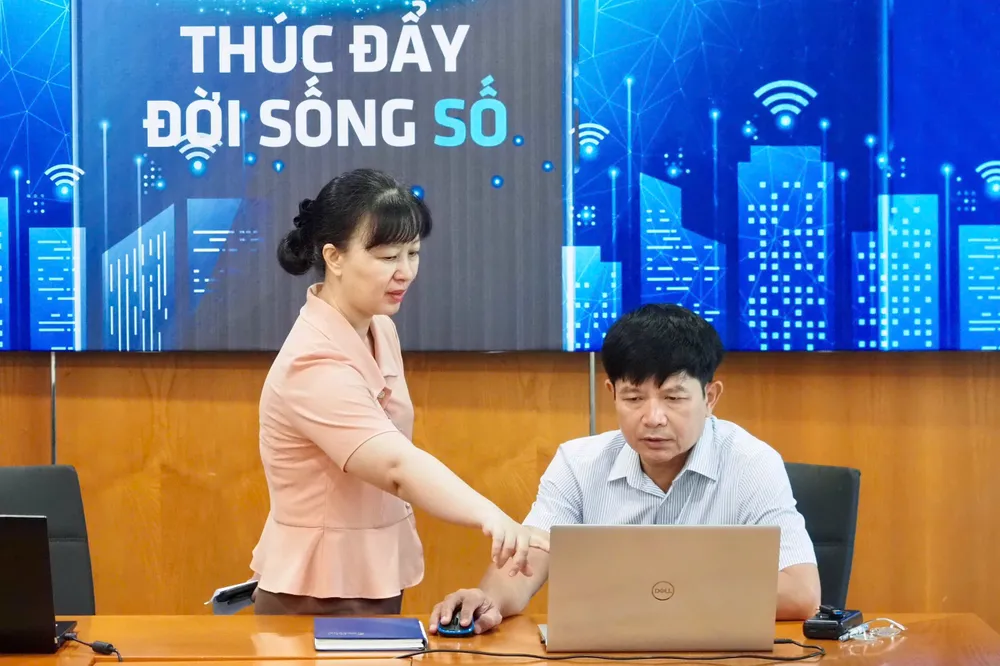
In Resolution 57 of the Politburo, Resolution No. 193/2025/QH15 of the National Assembly and recently the list of strategic technologies issued by the Government, the development of 5G network technology is emphasized and prioritized. What does this mean?

The development of 5G network technology is emphasized and prioritized in important documents of Vietnam such as Resolution 57 of the Politburo, Resolution No. 193/2025/QH15 of the National Assembly and the list of strategic technologies issued by the Government, with profound and multi-dimensional significance, demonstrating Vietnam's strategic vision in the digital age.
- Affirming 5G as a Pillar of National Development: The inclusion of 5G in top-level documents (Political Bureau, National Assembly, Government) shows that this is not just a simple technology but a strategic pillar for the country's development. This implies that 5G is considered a fundamental factor to promote:
- Digital economy: 5G will create new momentum for industries, services and digital business models, contributing to GDP growth.
- Digital society: Improve quality of life, provide more convenient public services, narrow the digital divide.-
- Digital Government: Improve the efficiency of state management and administration through the application of advanced connection technologies. - Strong Commitment of the Government and Political System: This priority demonstrates the strong commitment and determination of the entire Vietnamese political system in investing and developing 5G. This will create a favorable environment for:
- Attracting investment : Carriers and technology companies will be more confident in investing in 5G infrastructure and applications, knowing that they have support from the highest level.
- Inter-sectoral coordination: Ministries, departments and branches will have the responsibility and motivation to coordinate more closely in removing barriers, issuing support policies, and ensuring synchronization in implementation.
- Proactive in technology: Vietnam not only wants to be a technology user but also aims to master and develop 5G technology, especially devices and solutions. - Facilitating Deployment and Adoption: Being classified as a strategic technology opens many doors for practical support:
- Resource allocation: The government will prioritize budget allocation, spectrum, and other resources for 5G development.
- Incentive policies: There may be additional specific policies on tax, credit, and infrastructure planning to support network operators and technology businesses. Resolution No. 193/2025/QH15 has demonstrated this by providing financial support policies for telecommunications businesses to deploy 5G BTS stations.
- Promoting specific applications: This priority will encourage key economic sectors (smart manufacturing, healthcare, transportation) to proactively test and deploy 5G applications, creating and expanding market demand for this technology. - Enhancing National Position and Competitiveness. In the context of global technology competition, Vietnam's prioritization of 5G is a strong statement about its position:
- Enhance competitiveness : A solid 5G infrastructure will make Vietnam more attractive to foreign investors, especially in the fields of high technology and smart manufacturing.
- Affirming regional role : Vietnam will consolidate its position as a dynamic country in digital transformation in Southeast Asia and Asia.
- Digital sovereignty: Developing domestic 5G technology also contributes to ensuring information security and digital sovereignty, reducing dependence on foreign technology. - Preparing for the All-Digital Future: This priority is a strategic preparation for the future where 5G will be the backbone for:
- The era of AI and Big Data: Ensuring the ability to connect and process huge data in real time.
- Virtual Reality/Augmented Reality (VR/AR) and Metaverse: Laying the foundation for immersive digital experiences and virtual worlds of the future.
- Total Automation: Paving the way for smart cities, smart factories, and large-scale automated transportation systems.
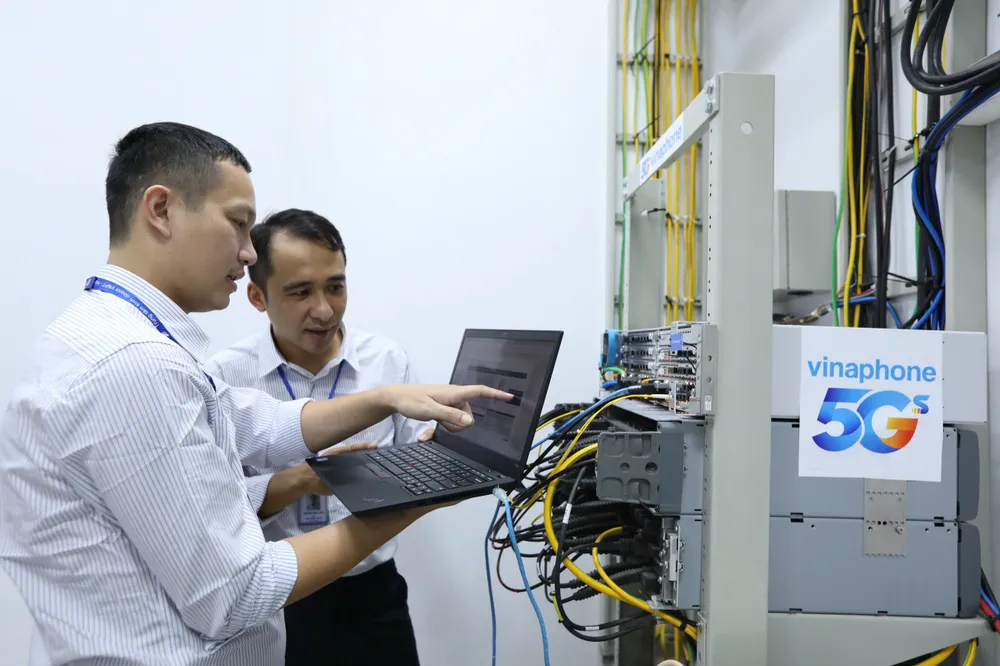
In short, the fact that 5G is emphasized and prioritized in Vietnam's highest-level documents is not only a symbolic statement but also an important guideline for action, demonstrating Vietnam's determination to build a modern and solid digital infrastructure, as a foundation for breakthrough socio-economic development in the coming time.
Sir, can you tell us how the Center will support wards and communes to take advantage of 5G technology in management, operation and connecting digital government to neighborhoods and hamlets?

With the functions and tasks assigned by the Ho Chi Minh City People's Committee, the Digital Transformation Center coordinates and advises wards and communes in building and deploying digital infrastructure and network infrastructure systems to meet the requirements for smooth operation of applications by July 1, 2025.
In addition to the fiber optic network infrastructure, the center will coordinate with experts and consulting units to build a modern, convenient and safe wireless mobile network model. In the near future, the center will deploy an application to support, manage and operate wards, communes, neighborhoods and hamlets. This application will be built and deployed on the 5G technology platform.
In addition, the center hopes to have cooperation and support from wards and communes in the process of operating and implementing digital transformation to effectively implement the digital transformation goal in Ho Chi Minh City.
Sir, could you please compare the advantages and disadvantages of the three major network operators deploying 5G in Vietnam, VNPT, Viettel and MobiFone, in developing and providing 5G services? Which network operator is leading and what are the points that need improvement?

With the current state of 5G network infrastructure, the strategic orientation of the Party and the State in promoting scientific and technological innovation, promoting digital transformation towards effectiveness and efficiency. All 3 network operators with widespread infrastructure scale have the opportunity to expand investment, promote research and application of 5G in life, contributing to completing the common goal of the country. The difficulty, in my opinion, is still a common difficulty that all network operators must face and solve: the problem of investment cost efficiency, people's habits, and the maturity of enterprises in applying the achievements of digital transformation and digital infrastructure to daily production and business activities.
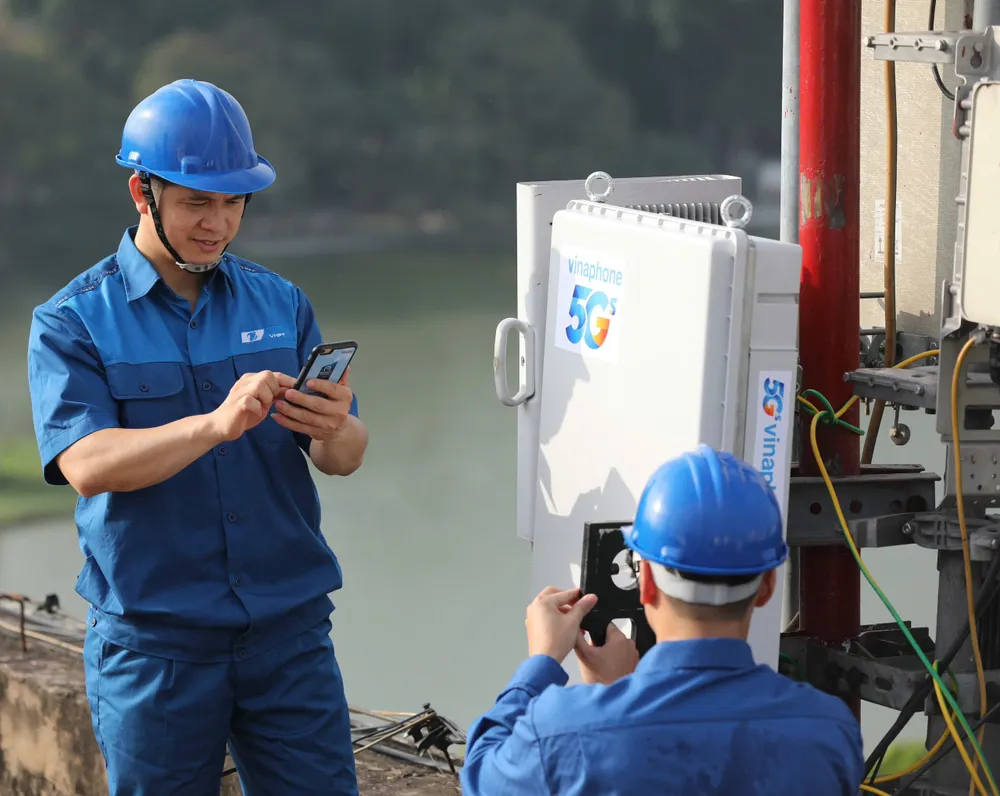
However, Vinaphone has 3 big advantages:
1. Managing long-standing telecommunications infrastructure of tunnels, fiber optic cables, core networks, and submarine fiber optic cable networks, so that the construction of 5G networks is faster and of better quality;
2. Long-term management and administration team for better customer service and support;
3. As a technology corporation, providing ecosystems and IT, Clouding; IoT products suitable for 5G infrastructure.
I heard that VinaPhone has covered 5G in all provinces and cities, especially in administrative centers, hospitals, airports, etc. Can you share more: have people in rural or suburban areas used 5G yet, and if the device supports it, can it automatically connect?

By the end of 2024, VNPT will have deployed 3,000 5G radio stations nationwide. By the end of 2025, the entire network will have about 20,000 stations.
Rural and suburban areas also have Vinaphone 5G coverage. However, it is not as dense as in the city due to priority policies and investment efficiency. In addition, it also depends on the actual needs of the market.
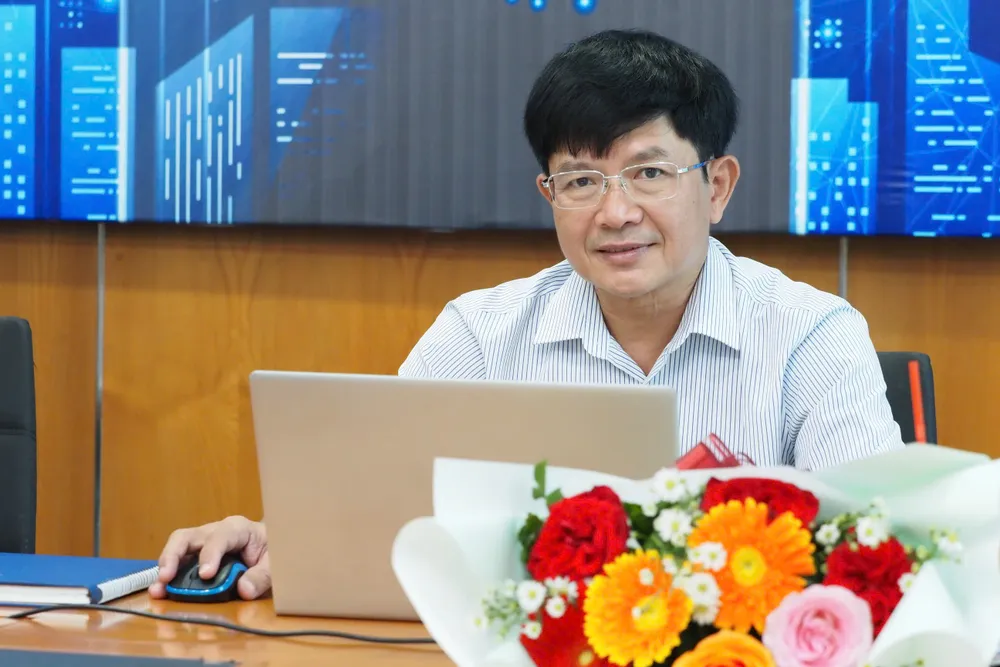
5G sounds very modern, but in reality, normal users like us don't see much difference compared to 4G. Are we lacking suitable applications, or are we still 'stuck' somewhere in the ecosystem?

Although Vietnam has made significant progress in deploying 5G networks in terms of infrastructure and number of subscribers, in reality, "exclusive" 5G applications and ecosystems - applications that can only maximize or operate effectively on the 5G platform, not simply upgrade from 4G - are still quite limited. There are many reasons for this situation:
- The actual demand of individual users is not strong enough.
- 4G still meets basic needs well: For most individual users in Vietnam, the current 4G network with its speed and stability is enough to meet common daily needs such as surfing the web, watching HD videos (YouTube, TikTok), using social networks, maps, e-banking or e-commerce. Users do not feel the urgent need to switch to 5G just to do the same things that 4G can handle.
- Lack of high-bandwidth applications: Globally, finding a truly high bandwidth consumption that would compel mainstream users to upgrade to 5G remains a challenge. Applications such as immersive VR/AR, ultra-low latency online gaming, or 8K mobile content are not yet widespread in the daily lives of the majority of Vietnamese people.
- 5G infrastructure is still in its early stages and is not yet synchronized.
- Coverage is not comprehensive: Although carriers have made efforts to cover major cities and some key areas, 5G coverage is still not as widespread and uniform as 4G (reaching 99.8% of the population)..
- Mainly 5G NSA (Non-Standalone): Most of the 5G networks deployed in Vietnam are 5G NSA, which means they still use the 4G LTE network core. This helps reduce initial deployment costs and increase speed, but cannot fully utilize advanced 5G features such as ultra-low latency (URLLC) or network slicing, which are the foundation for complex industrial applications. To develop exclusive applications, 5G SA (Standalone) infrastructure is needed, which requires larger investments and longer deployment times.
- "Wait and see" mentality
A segment of users and businesses have a "wait and see" mentality to see what significant benefits 5G really brings compared to 4G before investing or switching. They want to see truly different services, not just slightly faster speeds. Mr. Vo Do Thang, Director of ATHENA Cyber Security Training Center, also said that "Businesses need to know the difference between 5G and 4G, 3G or fiber optic networks to choose" (according to NLD).
Sir, could you please tell us how 5G will be applied in the pilot projects of smart cities, high-tech zones, and smart industrial zones that the Center is consulting and implementing?

With the increasing trends and demands of Internet users, Ho Chi Minh City Digital Transformation Center determines that the application of 5G technology and new generation mobile technologies is an inevitable and necessary requirement.
Without 5G, the deployment of mobile applications that require big data processing, map processing, high-quality images, and artificial intelligence will be difficult, thereby failing to attract or maintain the interest and use of city residents.
I feel that since 5G came out, Vinphone's 4G network feels much worse, the network operator should optimize and reduce the 4G network package. I just clicked Speedtest on the 5G package to see how fast it is, but in a few seconds, 4.4G of data is used up. Can the network operator advise me on some cheap social media packages that can last a day?

The quality of 4G networks (as well as 5G networks) of all network operators is currently being measured by the Ministry of Science and Technology based on objective parameters and the results are periodically announced in the mass media. These results do not show any difference in the quality of 4G networks before and after 5G deployment.

There are many Vinaphone packages (regardless of technology). You can easily search on the carrier's homepage or search on Google.
Will 5G and later 6G develop strongly in Vietnam in the future? Is this within our reach or does it also depend on external factors? Thank you.

The future development of 5G technology and especially 6G in Vietnam will depend on the combination of many key factors. This is a global technology race, and Vietnam's position will be determined by the combination of macroeconomic policies, internal capacity and the ability to adapt to world trends.
- Government leadership and legal framework: This is a key factor, especially for a nationally strategic technology like 5G and 6G.
- Clear national vision and strategy: As mentioned, the prioritization of 5G in the Resolutions of the Politburo (Resolution 57), the National Assembly (Resolution 193/2025/QH15) and the Government's strategic technology portfolio shows a strong commitment. For 6G, Vietnam has set a goal of being ready to pilot the 6G mobile network by 2030 and research 6G technology by 2025. This orientation creates a solid foundation for the next steps.
- Spectrum policy: It is extremely important to allocate spectrum appropriately and with sufficient bandwidth for both 5G (especially mid-band) and prepare for 6G (such as 3.5 GHz and 6 GHz bands for 6G). The government needs to have a clear and flexible roadmap for licensing and auctioning to ensure that network operators have enough resources to deploy.
- Support investment and promote competition: Financial incentives (such as supporting 15% of the total investment value for 20,000 new 5G BTS stations in 2025), simplifying administrative procedures, and encouraging infrastructure sharing will reduce the burden on network operators. At the same time, maintaining a healthy competitive environment among network operators also promotes service quality and deployment speed.
- Completing the legal framework and standards: Developing regulations and technical standards for advanced 5G/6G applications (e.g., self-driving cars, telemedicine, smart factories) is necessary to create a legal corridor for businesses to confidently invest and develop services.
- Research and development (R&D) capabilities and technological initiative
- This is the decisive factor for Vietnam's position in the global technology value chain, especially with 6G.
- Investment in R&D: The establishment of the Steering Committee to promote research and development of 6G mobile information technology and the encouragement of network operators to join the 6G research group represent initial efforts. The future will depend on increasing substantial investment in research institutes, universities and corporate R&D centers.
- Developing high-quality human resources: 5G and 6G require a team of engineers and experts with very high qualifications in telecommunications, AI, big data, and edge computing. The ability to train and retain talent will be a key factor.
- International cooperation and position on the world technology map
- Network technology cannot be developed alone in a connected world.
- Participate in the 6G Standardization Process: Leading countries are actively shaping the standards for 6G. Vietnam needs to participate more deeply in international forums and organizations to have a voice, update trends and ensure compatibility of domestic technology.
- Technology transfer cooperation: Learning from experience and receiving technology transfer from leading countries and corporations in the world will help Vietnam shorten the development gap.
- Attracting foreign investment: A clear legal environment, supportive policies and developed infrastructure will attract large technology corporations to invest and develop 5G/6G in Vietnam.
In short, the future of 5G and 6G development in Vietnam will be determined by the synchronous and effective coordination between the Government, network operators, the business community and research institutes. The Government plays a strategic role in creating a favorable environment. Network operators and businesses are the forces implementing, investing and developing applications. R&D capacity and high-quality human resources will determine the ability to master technology.
If Vietnam can maintain its current growth momentum, address cost and infrastructure challenges, and find truly disruptive applications, we could well be a pioneer in the 5G and 6G era.
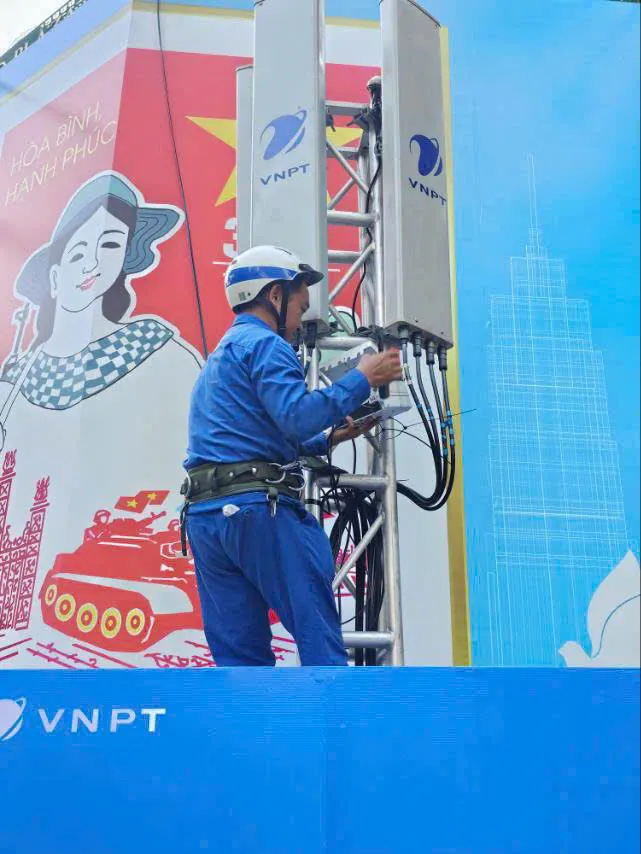
Dear network operator, for normal users, basic needs such as surfing social networks, reading newspapers, watching dramas, is it necessary to upgrade from 4G to 5G package?

VNPT has many different service packages to meet the diverse needs of customers. But for basic needs like you set out, (in my personal opinion) current 4G packages can completely meet the requirements.
However, with outstanding features (High speed and low latency), customers should experience it and certainly in the near future, customers will recognize the difference with previous technologies.
Currently, Vinaphone does not differentiate packages based on technology. That means you can use your current package to experience 5G.
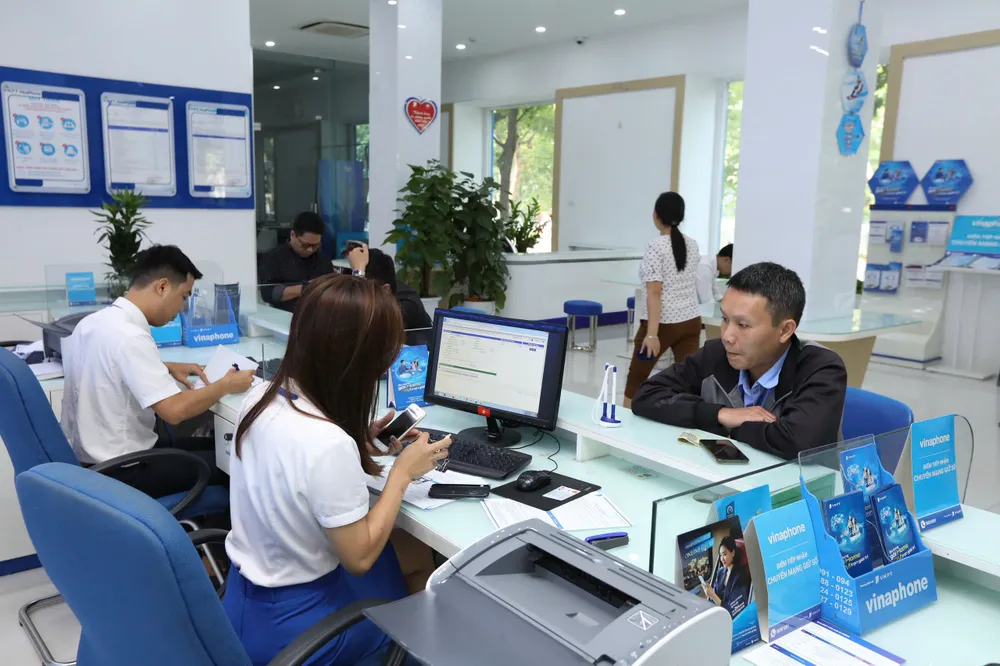
VNPT leaders, please tell us, what conditions or factors are needed to master 5G technology? And has VNPT taken any specific steps to achieve this goal? What can people expect in the near future?

Requirements to master 5G network technology
To master 5G network technology, the following core requirements must be met:
1. Development of modern network infrastructure :
- Deploy networks based on virtualization architecture (NFV/SDN), cloud computing and support both NSA (4G legacy) and SA (standalone) models.
- Use optimal frequency bands (e.g., 3,700–3,800 MHz bands) to achieve high speeds (>1 Gbps) and low latency (<10ms).
2. Building an application ecosystem :
- Developing solutions for key industries such as healthcare, education, smart manufacturing, smart cities.
- Multi-industry collaboration to create practical use-cases (e.g., Private 5G Network, Network Slicing).
3. Training high-tech human resources :
- Develop a team of engineers who master core technology, especially in the fields of chip design and 5G network management.
VNPT's solution in mastering 5G technology
VNPT systematically deploys through the following strategies:
1. Investing in infrastructure and advanced technology
- Modernize core network : Migrate to cloud-native architecture, using virtualization platform (vNF) for flexible service deployment.
- International standard 5G technology : Using 64T64R Massive MIMO & Beamforming standard, 5nm chipset, combining NSA/SA model to optimize 4G speed and coverage.
- Nationwide coverage : Deploying VinaPhone 5G service in 34 provinces and cities, focusing on key areas (industrial parks, hospitals, schools)
2. Develop diverse services and applications
- Deploy Private 5G Network (customize speed/latency), Network Slicing (divide private virtual channels), Open RAN (integrate multiple technologies).
- Applications in smart manufacturing, telemedicine, online education.
4. Strategic cooperation and ecosystem promotion
- Domestic and international partners : Cooperate with Ericsson and Nokia to build R&D labs and share technology.
- Pioneering role : Promoting national digital transformation through the 5G platform, supporting the "Make in Vietnam" initiative
How does the Center plan to coordinate with other parties to develop digital citizen applications to exploit the advantages of 5G and bring more practical benefits to people?

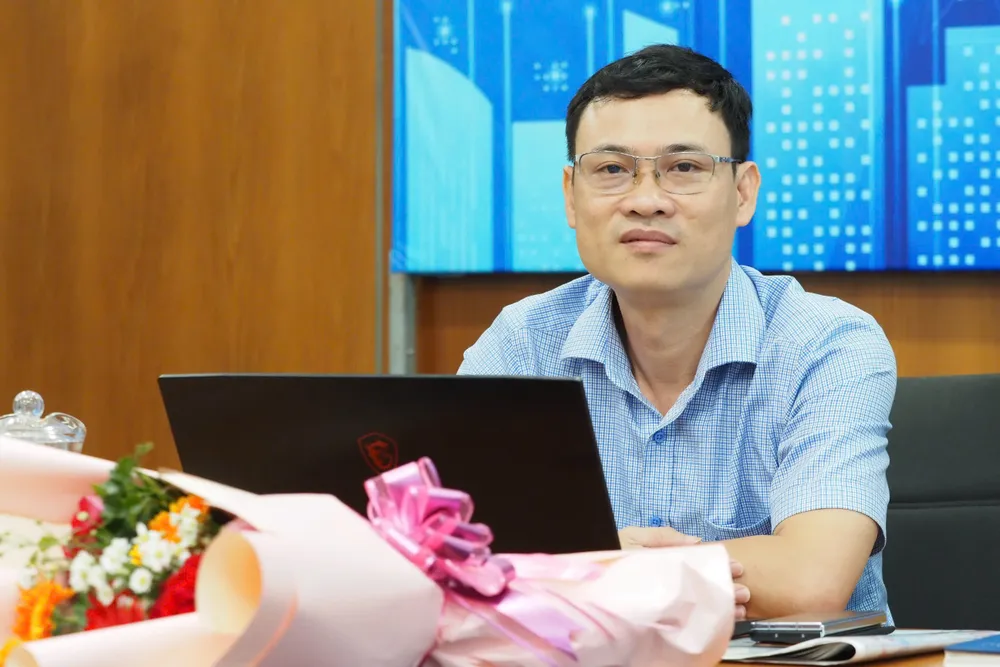
With the City Digital Citizen application (Digital Citizen App), since the official announcement of its official operation, the Digital Transformation Center has deployed main work groups such as:
1/ Continuous and safe application operation;
2/ Update and provide new and timely information to users;
3/ Research and promptly update new utilities;
4/ Organize widespread communication to agencies, units, localities and businesses so that the Digital Citizen App becomes an effective and simple communication tool between people and the City government.
The Digital Transformation Center is honored to receive the second prize in the 2024 City Innovation Award from the City People's Committee for the Digital Citizen App solution and product. In the coming time, the Digital Transformation Center will continue to improve and promptly update the utilities in the Digital Citizen App to serve users.
Let me ask, in which field is VinaPhone's 5G network being applied the most? What are the outstanding advantages, and are there any difficulties or limitations?

Vinaphone's 5G network is a modern digital infrastructure with high speed and low latency, so it serves almost all telecommunications and digital transformation applications of the government, businesses and people.
In addition to individual customers, VNPT now has customers who are businesses operating in the fields of electricity transmission, clean water, and smart agriculture.
In the future, 5G will be the backbone for:
- The AI and Big Data Era : Ensuring the ability to connect and process massive data in real time.
- Virtual Reality/Augmented Reality (VR/AR) and Metaverse: Laying the foundation for immersive digital experiences and virtual worlds of the future.
· Pervasive Automation: Paving the way for smart cities, smart factories, and large-scale automated transportation systems.
VNPT leaders, please tell us: The Government has a policy to directly support telecommunications enterprises to deploy 5G infrastructure for rapid coverage nationwide - this policy is truly groundbreaking. So has VNPT received this support yet, and how has it been implemented? Can you tell people specifically?

According to Decree No. 88/2025/ND-CP and Resolution No. 193/2025/QH15, the Government directly supports telecommunications enterprises in deploying 5G infrastructure with the prerequisite that: Enterprises must install at least 20,000 5G broadcasting stations nationwide (63 provinces/cities) before December 31, 2025, be accepted and put into use from February 19, 2025.
To implement the Government's directive, VNPT aims to expand 5G coverage by 3 times in 2025, aiming to serve 99% of the population. The Group is focusing on upgrading telecommunications infrastructure, optimizing frequency bands to ensure stable connection quality even in areas with high usage density. VNPT is also cooperating with technology partners to develop applications that exploit the full potential of 5G in digital economy, e-government and smart urban services.
VNPT will certainly respond to the new development of 20,000 BTS stations covering 63 provinces and cities (old), now 34 provinces and cities to take advantage of this government support.
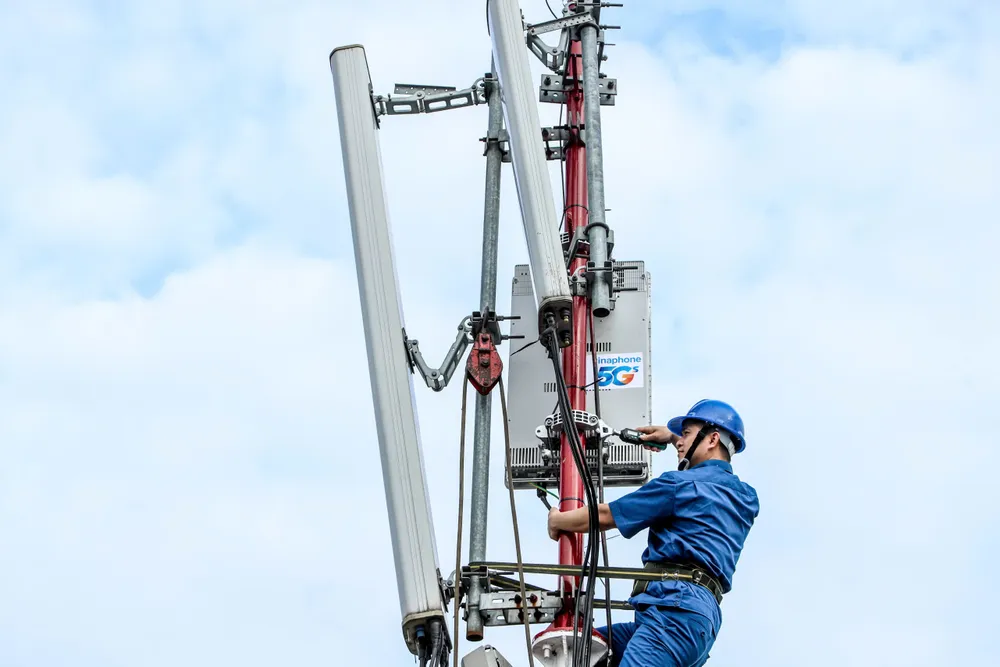
I am the owner of a small business, distributing medical equipment, and am in the early stages of digital transformation. I would like to ask how VinaPhone's 5G network can be applied in digital transformation such as business operations, warehousing, management, etc.? If so, how can I contact you?

VNPT is on track to deploy a complete and widespread 5G network to ensure satisfaction of all different business needs.
Vinaphone 5G will be able to help businesses in managing product chains; operating product distribution; managing employees to improve work efficiency; managing costs and resources optimally for businesses; managing customers and markets.
Can you tell us how the Center is strategically coordinating with the Department of Science and Technology to develop more effective 5G applications?

The Department of Science and Technology is the agency performing the state management function, advising the City Party Committee and the City People's Committee in the field of digital transformation in general and the deployment of 5G applications in particular. The Digital Transformation Center is the unit that implements and deploys digital transformation according to the direction, program and plan of the City. Recognizing the importance and assigned mission, the City Digital Transformation Center is always proactive, active and timely in coordinating with the Department of Science and Technology to effectively implement digital transformation and innovation, including 5G applications to serve agencies, units and people.
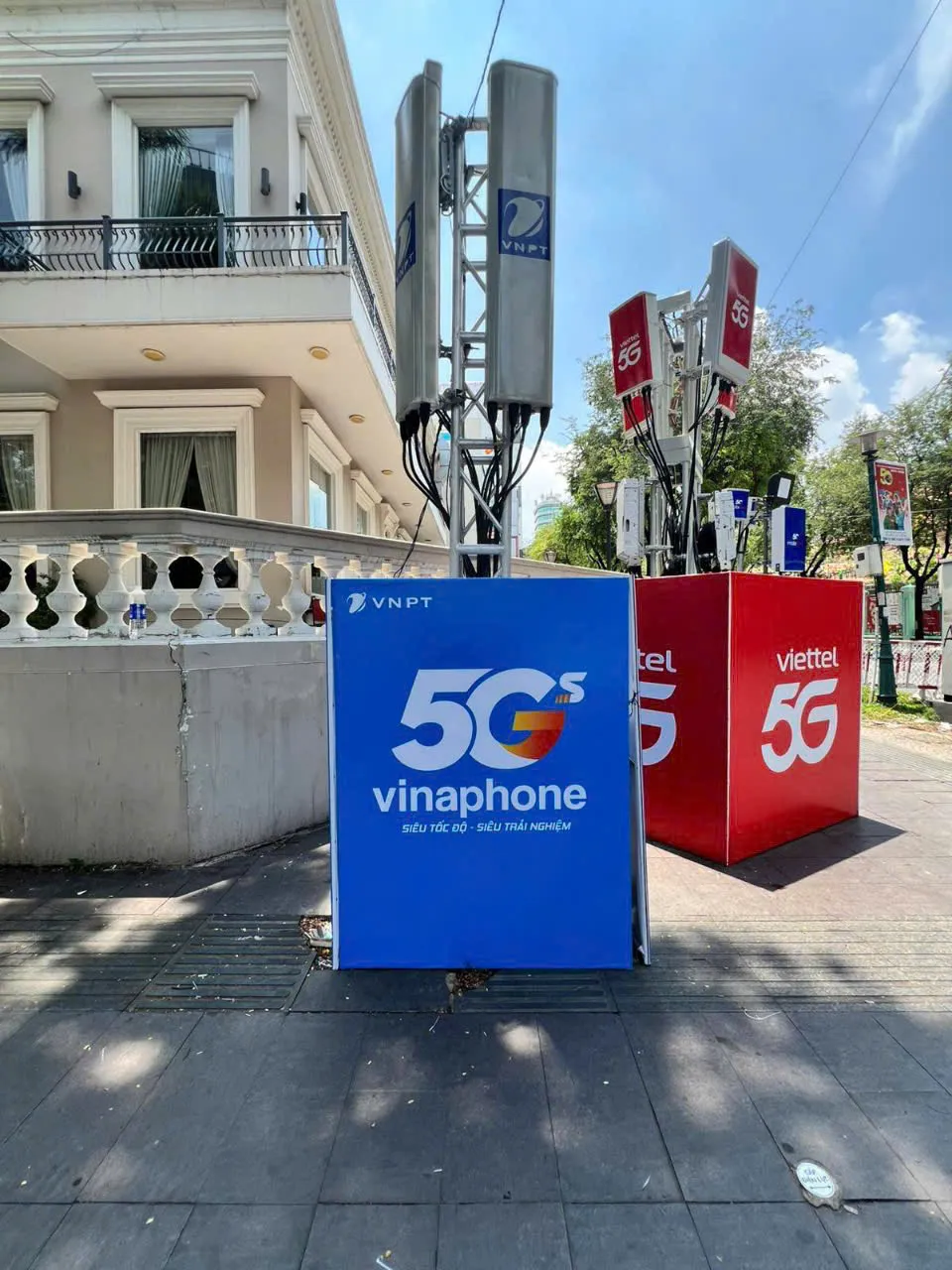
5G is expected to open up many new opportunities such as IoT, self-driving cars, remote surgery... but so far these are not popular and have not brought in clear revenue. Meanwhile, network operators still have to live on traditional services such as calling, texting, data. So is this the biggest challenge in developing 5G today?

In my opinion, yes.
However, the change will be very rapid. In fact, revenue from 5G-based IT services and solutions has increased rapidly in recent months. Customers themselves (governments, businesses, and people) have changed a lot.
Services such as: Online public services (Government); VNEdu for education; HIS for healthcare; IoC for provinces and cities; IoT services for managing electrical cabinets for electricity; managing water meters for water supply; managing fleets for logistics enterprises contribute to increasing sales for Vinaphone 5G.
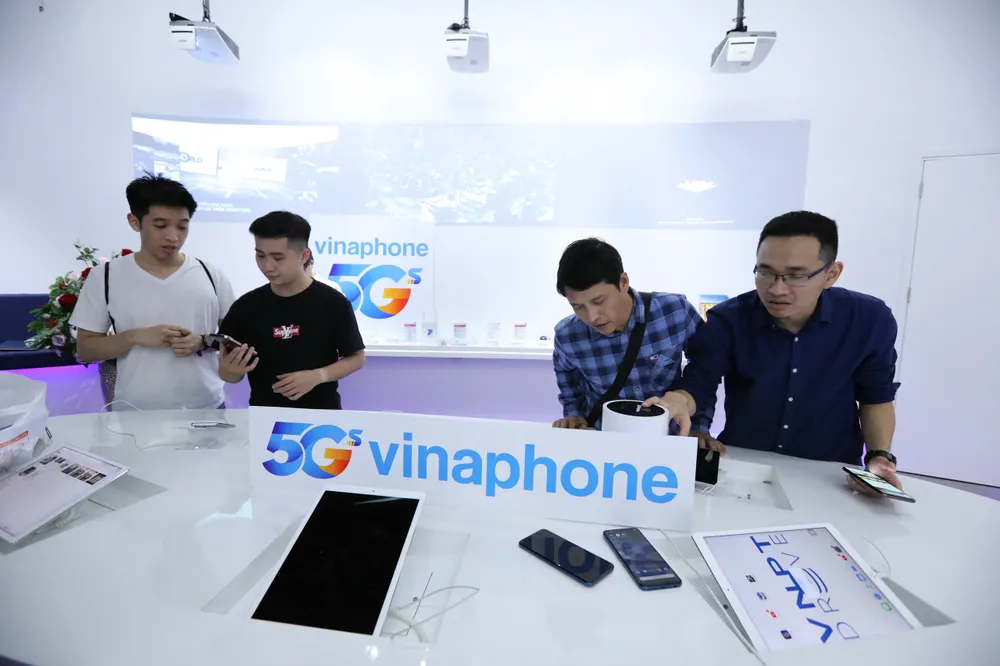
I am working in the field of digital transformation consulting for businesses. Can your 5G network infrastructure ensure smooth operations for businesses? How fast is the signal sending and receiving? How is customer information security?

VNPT is on the road to deploying a complete, widespread and seamless 5G network to ensure satisfaction of all different needs of businesses. In that process, ensuring information security and information confidentiality for customers is always VNPT's top priority. VNPT's security is concerned at all network layers; in all services; in all protocols and processes and supporting customers (Government, businesses and people) with products, solutions specific to customers' requirements.
With VNPT, has the Center had any cooperation activities to jointly develop digital infrastructure in general and 5G network in particular? How far are these cooperations being implemented, sir?

For telecommunications infrastructure service providers such as VNPT, Viettel, FPT Telecom, GTel, Ho Chi Minh City Digital Transformation Center has coordinated and had cooperative activities in recent times in Ho Chi Minh City to establish and deploy transmission infrastructure, digital infrastructure to serve the operation of digital applications in state management and online public services, and utility applications for people.
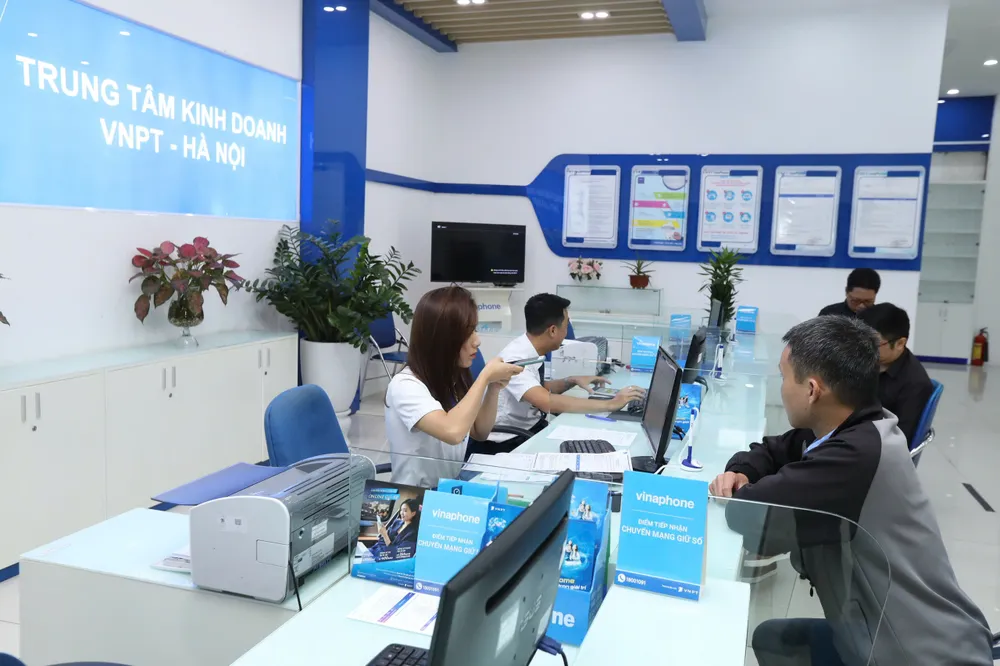
Currently, many customers are not interested in 5G because the price is still high, and when using basic tasks such as watching videos and surfing the web, they see that the data capacity drops very quickly. So does the network operator have anything to share about this issue, and is there any adjustment or solution to make it easier for users to access?

To solve the above problem, Vinaphone currently has many diverse packages with affordable prices, suitable for customers' data usage needs. It should also be emphasized that Vinaphone currently does not distinguish between 5G and 4G service packages, so existing customers can fully experience 5G service with 4G service rates.
I heard that VinaPhone has 5G, so is it actually significantly faster than 4G? Is there any difference that users should try?

Vinaphone (VNP) has commercialized 5G since 2024. There are currently more than 3 million 5G subscribers. In fact, the quality of VNP 5G service is much faster than 4G and has lower latency. Ideally, the download speed can reach over 1Gbps, with a latency of less than 10ms. According to Ookla, the current average speed of VNP 5G is 354.44 Mbps; upload speed is 94.92 Mbps.
Of course, with new technology and better quality, users should/must try and use it for real to increase the experience.
Source: https://www.sggp.org.vn/5g-don-bay-cho-doi-song-so-o-thanh-pho-hon-14-trieu-dan-post802008.html



![[Photo] Prime Minister Pham Minh Chinh chairs meeting to deploy overcoming consequences of storm No. 10](https://vphoto.vietnam.vn/thumb/1200x675/vietnam/resource/IMAGE/2025/10/3/544f420dcc844463898fcbef46247d16)



![[Photo] Students of Binh Minh Primary School enjoy the full moon festival, receiving the joys of childhood](https://vphoto.vietnam.vn/thumb/1200x675/vietnam/resource/IMAGE/2025/10/3/8cf8abef22fe4471be400a818912cb85)




![[Photo] Binh Trieu 1 Bridge has been completed, raised by 1.1m, and will open to traffic at the end of November.](https://vphoto.vietnam.vn/thumb/402x226/vietnam/resource/IMAGE/2025/10/2/a6549e2a3b5848a1ba76a1ded6141fae)

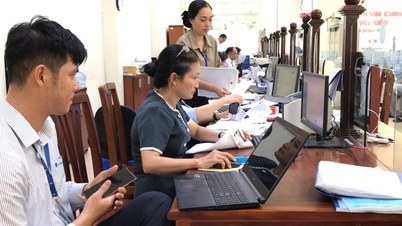

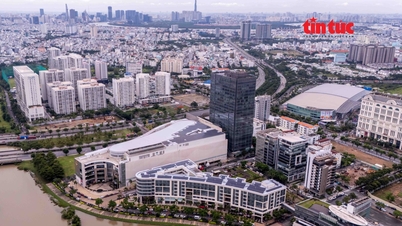

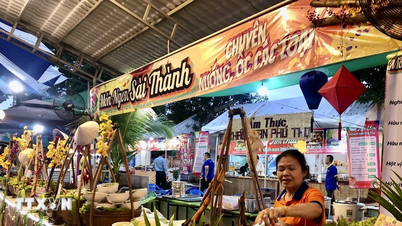
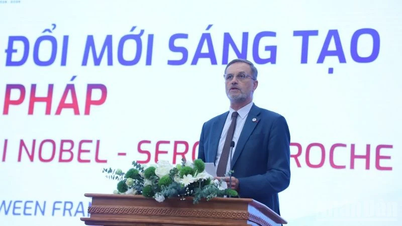
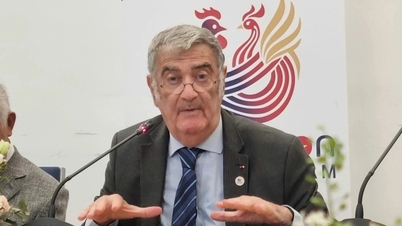



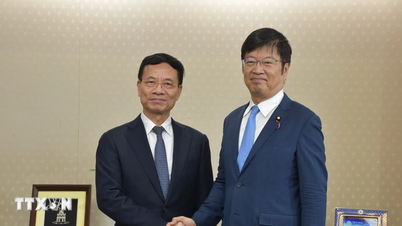
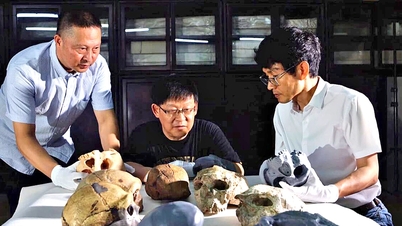

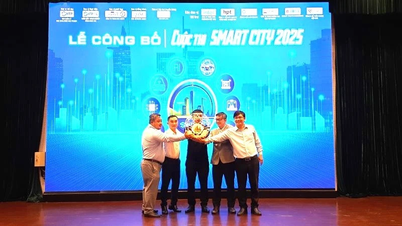




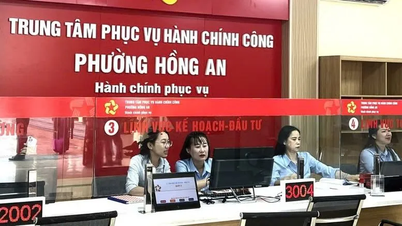
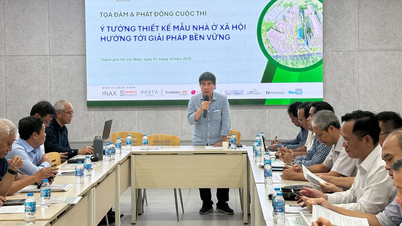

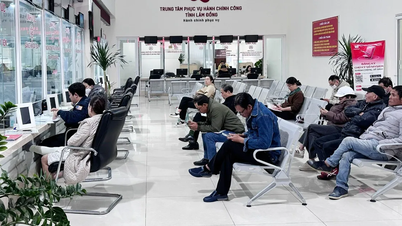
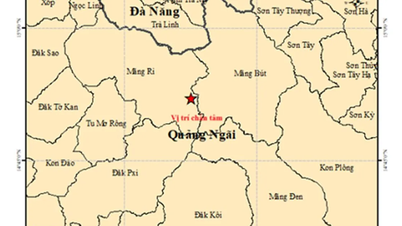
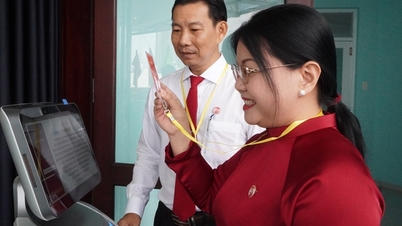






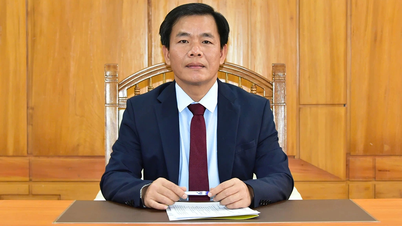





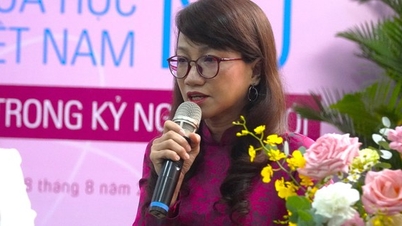

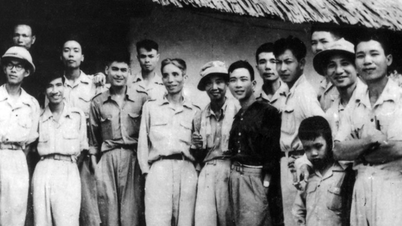




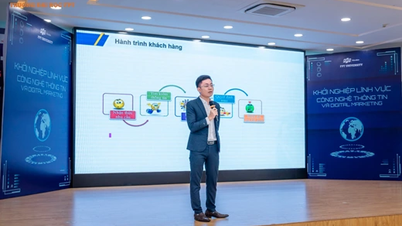

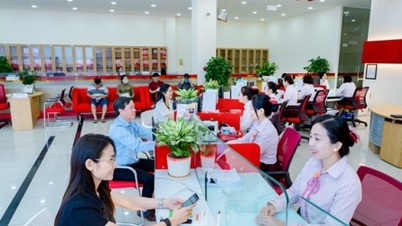

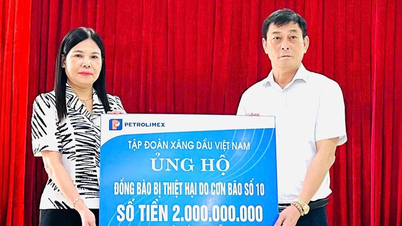




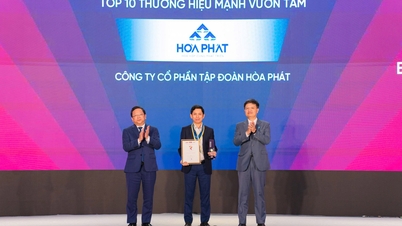


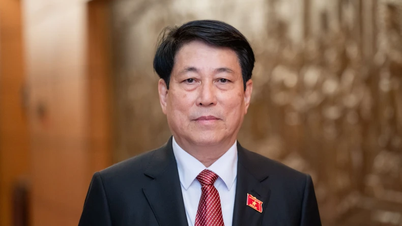
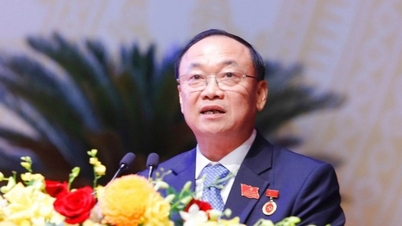

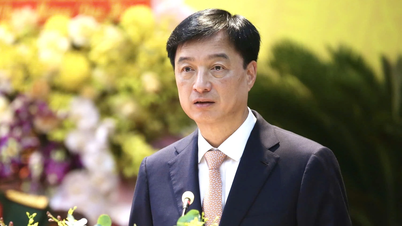
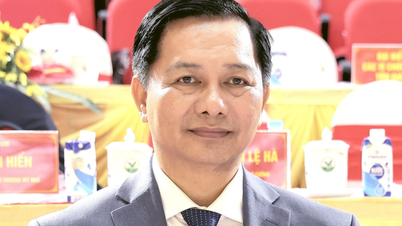


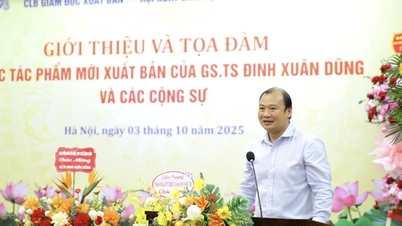



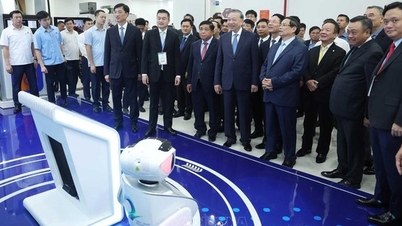

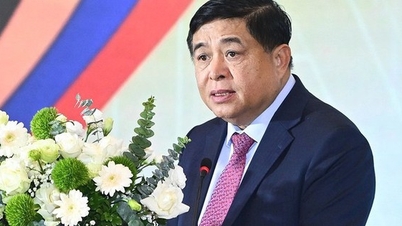
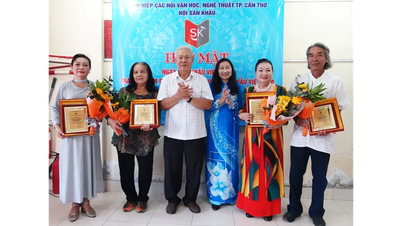
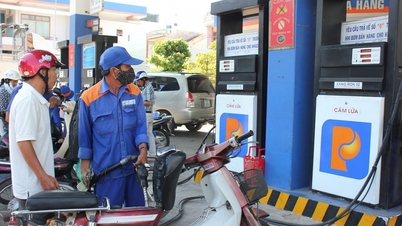

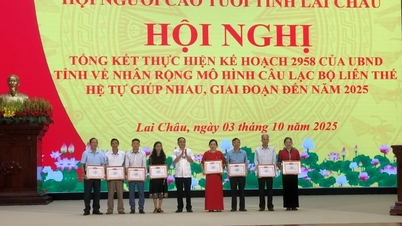

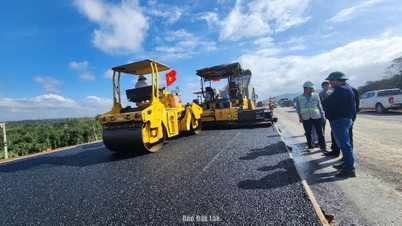
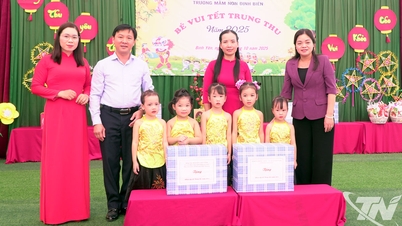



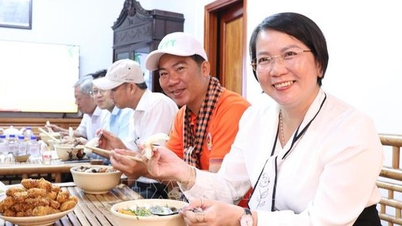










Comment (0)